Few culinary projects reward effort like crafting your own BBQ pit. From rugged brick structures that anchor family gatherings to fold-flat travel fireboxes built for remote beaches, today’s pit designs balance tradition and innovation. This guide shares twenty distinct BBQ pit ideas—each chosen for a specific advantage such as heat retention, portability, or multi-fuel versatility—and distills practical construction tips drawn from seasoned builders and recent product tests. Whether you have space for a permanent masonry monument or need something that tucks beside camping gear, you’ll find a solution that amplifies flavor, fosters conversation, and lasts for years of smoke-kissed memories.
1. Classic Brick BBQ Pit
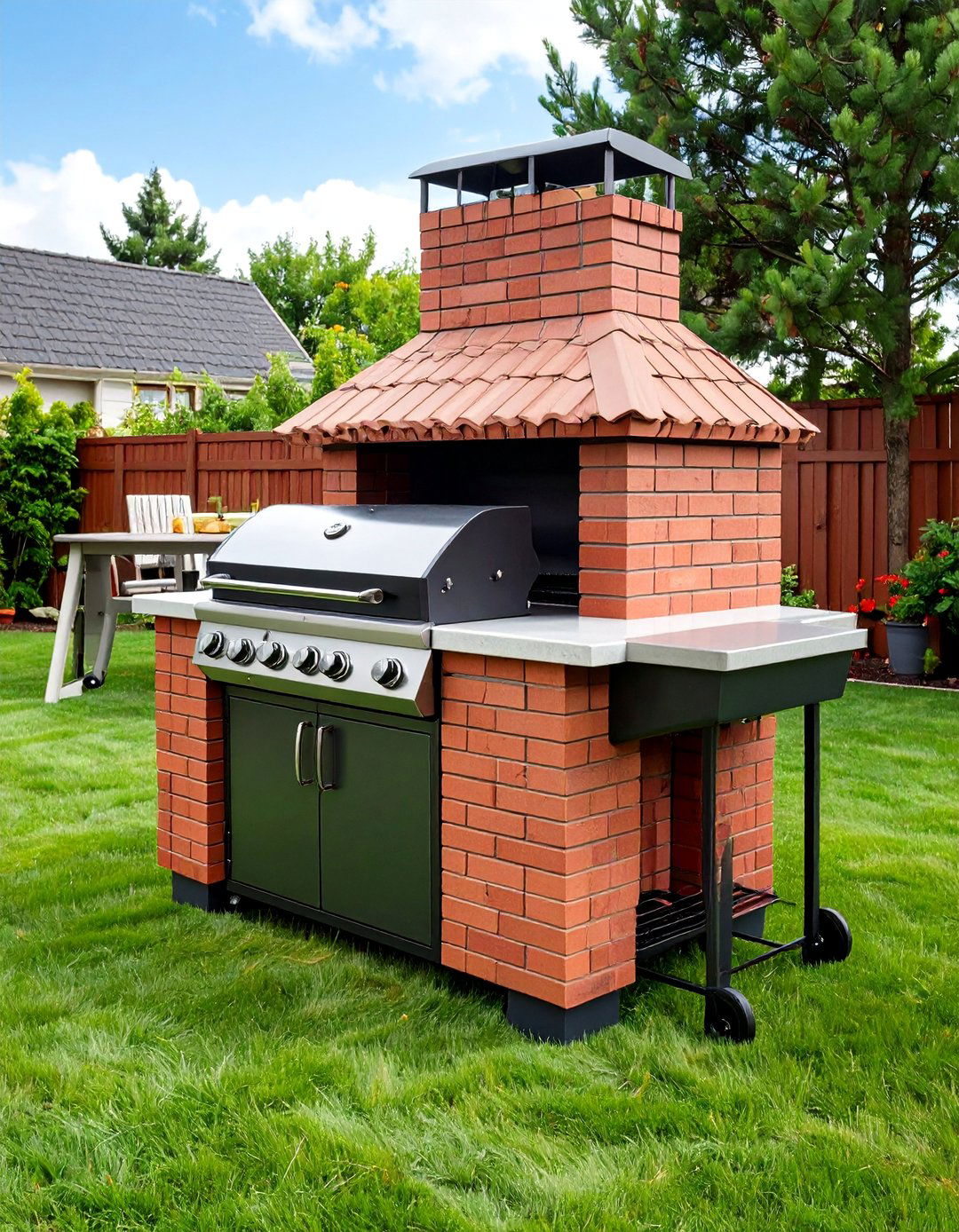
A sun-warm wall of stacked firebrick instantly turns a corner of your yard into a timeless brick BBQ pit, channeling the rugged charm of open-air smokehouses while giving you precise heat control. Because brick retains and radiates heat evenly, you can bank coals to one side for slow indirect ribs or spread them wide for searing steaks. Choose fire-rated brick set in high-temp mortar, add a steel grate on adjustable angle-iron ledges, and finish the top course with a split-face cap that doubles as a prep shelf. Regular cleaning is simple—just sweep ash and hose the masonry. This permanent build raises resale appeal and resists decades of weather.
2. Texas-Style Offset Smoker BBQ Pit
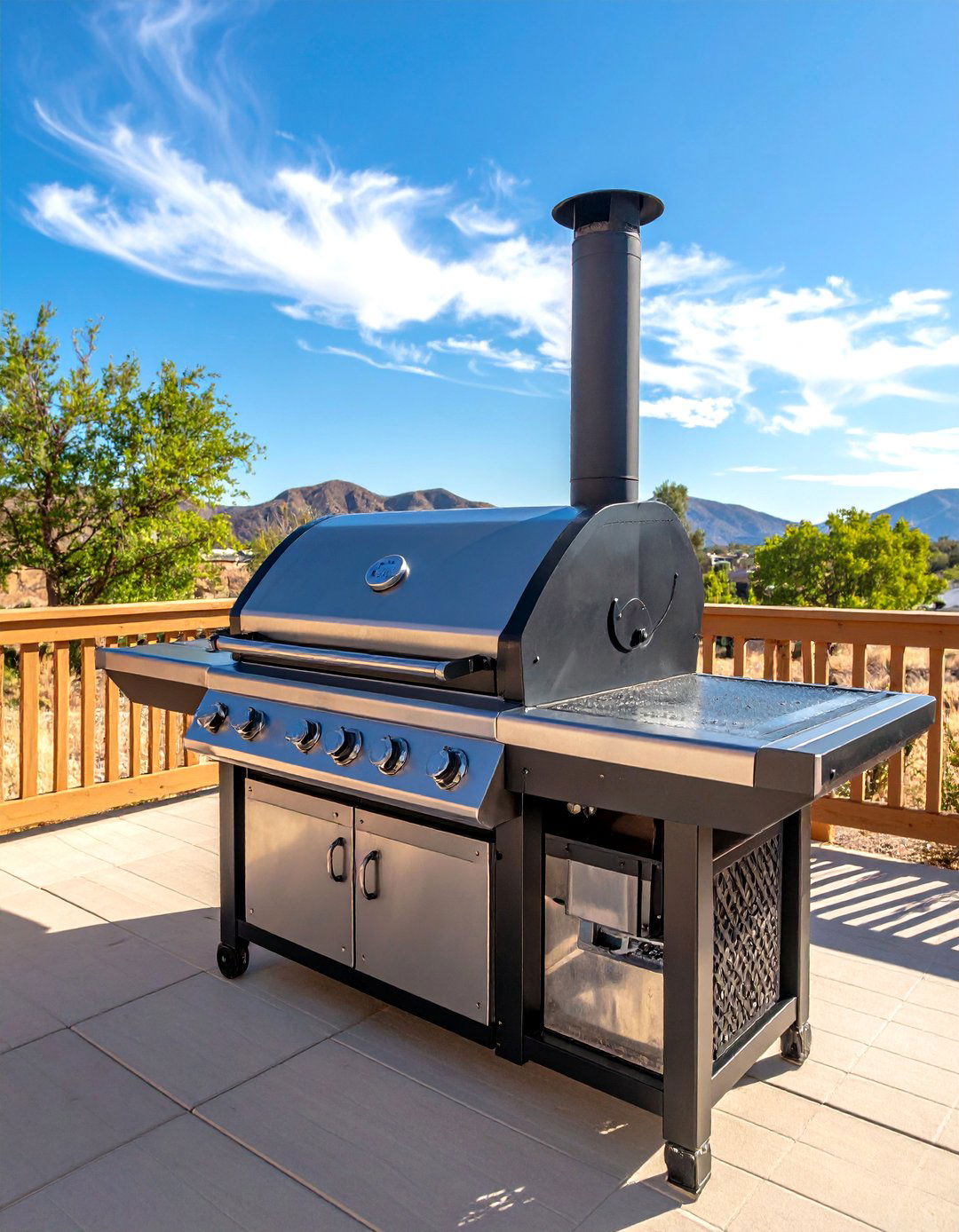
Unlike compact grills, a Texas-style offset smoker BBQ pit separates fire from food, creating billowing clean smoke that bathes briskets for 12-plus hours. Start with a thick-walled propane tank or heavy steel pipe as the cook chamber; weld a smaller firebox to the side a few inches lower so heat flows upward, then add tuning plates to even temperatures. Season the interior with a fatty burn-in, monitor draw using gasketed doors, and tweak airflow by adjusting the intake damper until the stack releases thin blue smoke. The result is restaurant-quality bark without constant flipping, while the roomy grate also roasts turkeys or ribs concurrently.
3. Cinder-Block Backyard BBQ Pit
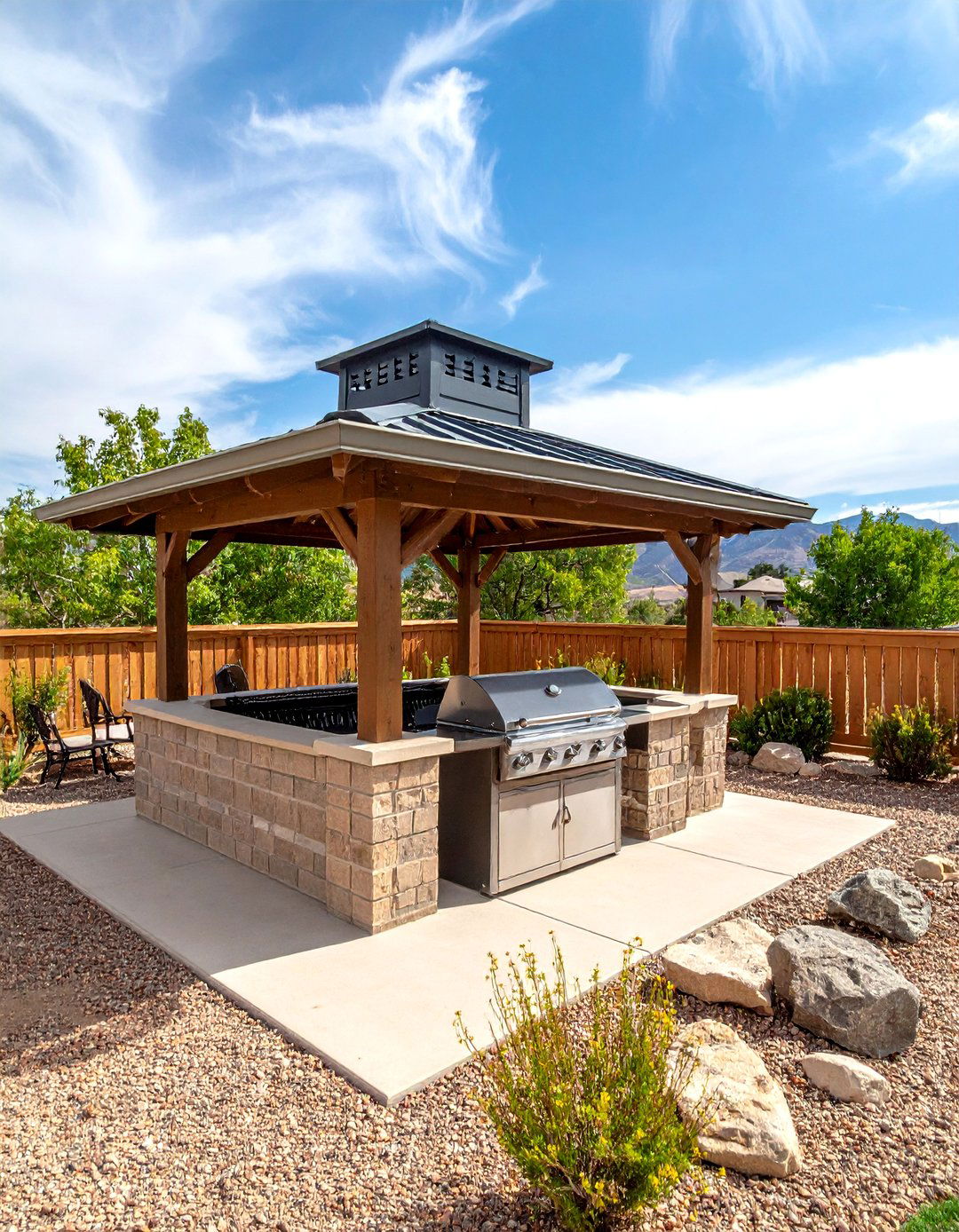
This budget-friendly cinder-block backyard BBQ pit goes up in an afternoon yet handles whole shoulders with ease. Dry-stack two or three courses of solid 8×8×16 blocks in a horseshoe, leaving the front open for tending coals, then span the gap with rebar and a food-safe expanded-metal grate. Because the joints are mortar-less, you can rearrange blocks for catering gigs or clean-outs, and the masonry’s mass evens out temperature swings during windy cooks. Slip a sheet-metal roof panel on top to trap smoke and create a crude convection hood; drill a couple of three-inch vent holes in back for draft. It’s rugged, movable, and costs less than a fancy cooler.
4. Santa Maria Live-Fire BBQ Pit

Few setups make tri-tip sing like a Santa Maria live-fire BBQ pit with its signature crank-wheel grate that glides above oak embers. Build a rectangular steel box or brick trough about 24 inches deep, weld channels on both ends, and rig a stainless grate to bicycle-chain pulleys so you can raise or lower meat in seconds. The open top encourages high-heat searing, yet dropping the grate close to fading coals delivers gentle finishing heat without moving food. Traditional red-oak chunks impart a mild sweetness, while the adjustable grate gives crispy bark on chicken without flare-ups. The theatrical wheel even turns backyard cooking into a conversation starter.
5. Argentine Parrilla BBQ Pit
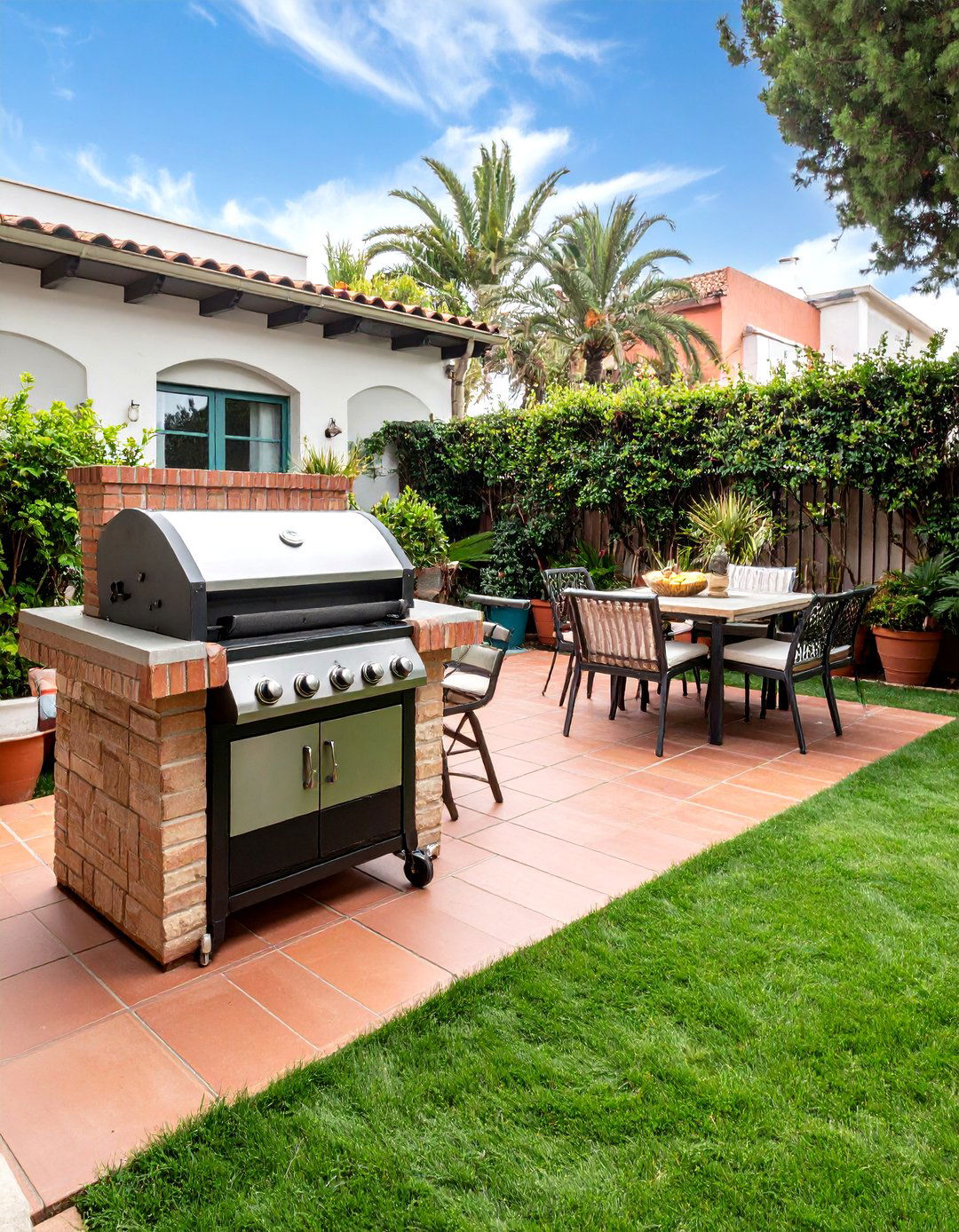
An Argentine parrilla BBQ pit lets you channel gaucho grilling by sliding steaks over glowing coals shoveled from a side-fire brasero. Start with a masonry or steel V-grate angled slightly forward so rendered fat drips into a front trough instead of the fire, taming flare-ups and preventing bitter smoke. A rear fire basket feeds fresh embers beneath the grate whenever heat dips, meaning you maintain rock-steady searing zones without lifting meat. Height-adjust rails or scissor frames give millimeter-precision control, perfect for delicate provoleta cheese or butterflied lamb. Beyond beef, the parrilla’s gentle radiant heat bakes vegetables and flatbread simultaneously, transforming dinner into an asado spectacle.
6. Traditional Earth-Oven BBQ Pit
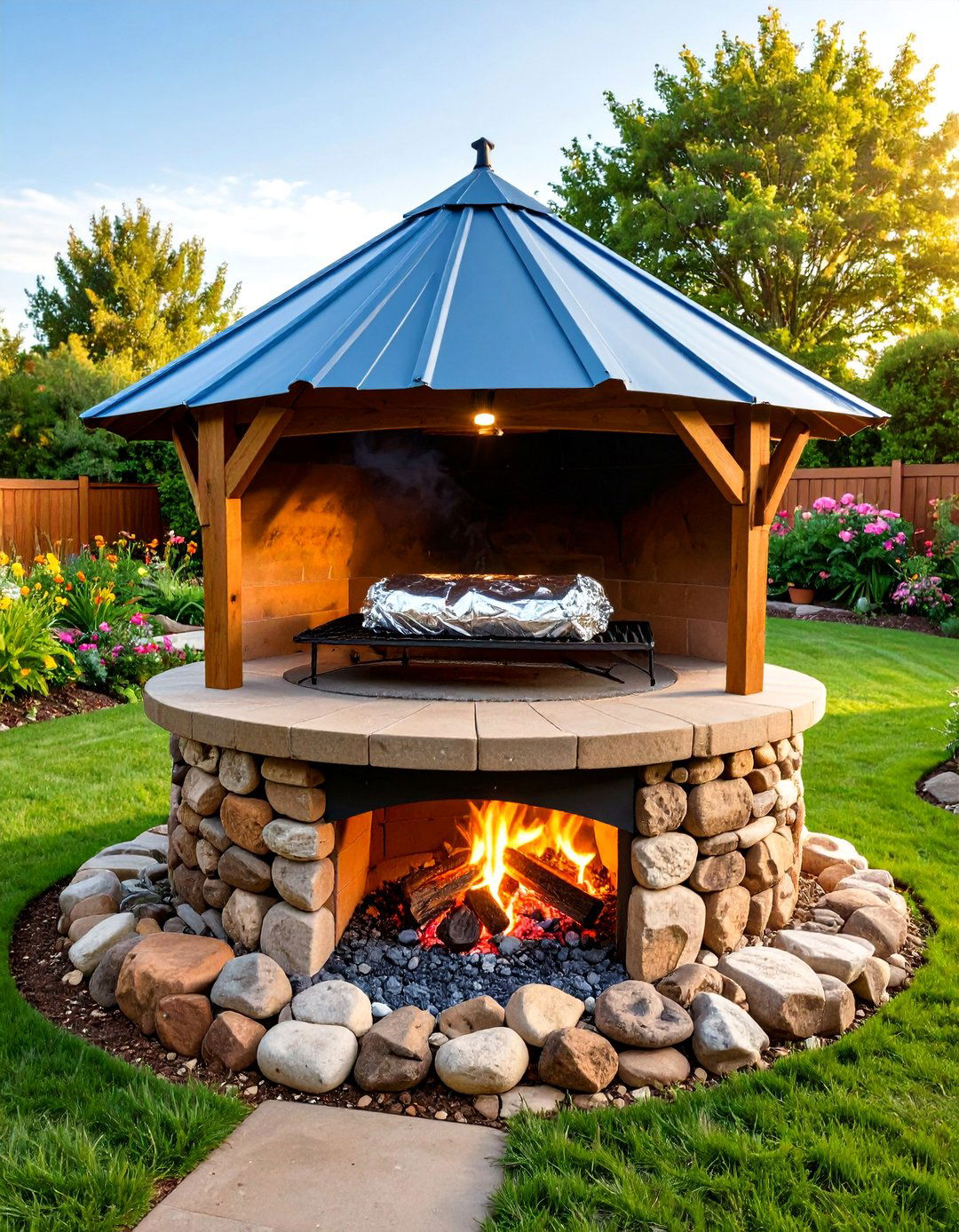
Digging a traditional earth-oven BBQ pit, or imu, taps ancient island technique for ultra-moist pork. Excavate a three-foot-deep oval, line it with river rock, then burn hardwood to heat stones until glowing. After raking coals aside, lower foil-wrapped meat atop banana leaves, cover with soaked burlap, and finally mound soil to trap steam overnight. The earthen insulation keeps temperatures steady around 225 °F, while natural moisture basting breaks collagen into gelatin without supervision. Come sunrise, the pit exhales smoky fragrance and shoulders collapse into silky shreds that taste impossibly rich yet clean. This low-tech marvel costs nothing but sweat and rewards family gatherings with storytelling atmosphere.
7. Vertical Drum Smoker BBQ Pit

Take a recycled 55-gallon drum, drill a few intake holes near the base, add threaded pipes with ball-valves, then hang briskets inside and you have a vertical drum smoker BBQ pit that sips charcoal for 10-plus hours. Because the meat hangs centrally, juices self-baste and vaporize, layering extra flavor onto bark, while the tall cylinder creates convective heat that cooks evenly without a water pan. A simple rebar cross or stainless rods hold hooks, and a removable basket keeps coals tidy. Best of all, the design weighs under 30 kg, so one cook can load it into a hatchback for tailgates without specialized tools.
8. Whole-Hog Roasting BBQ Pit
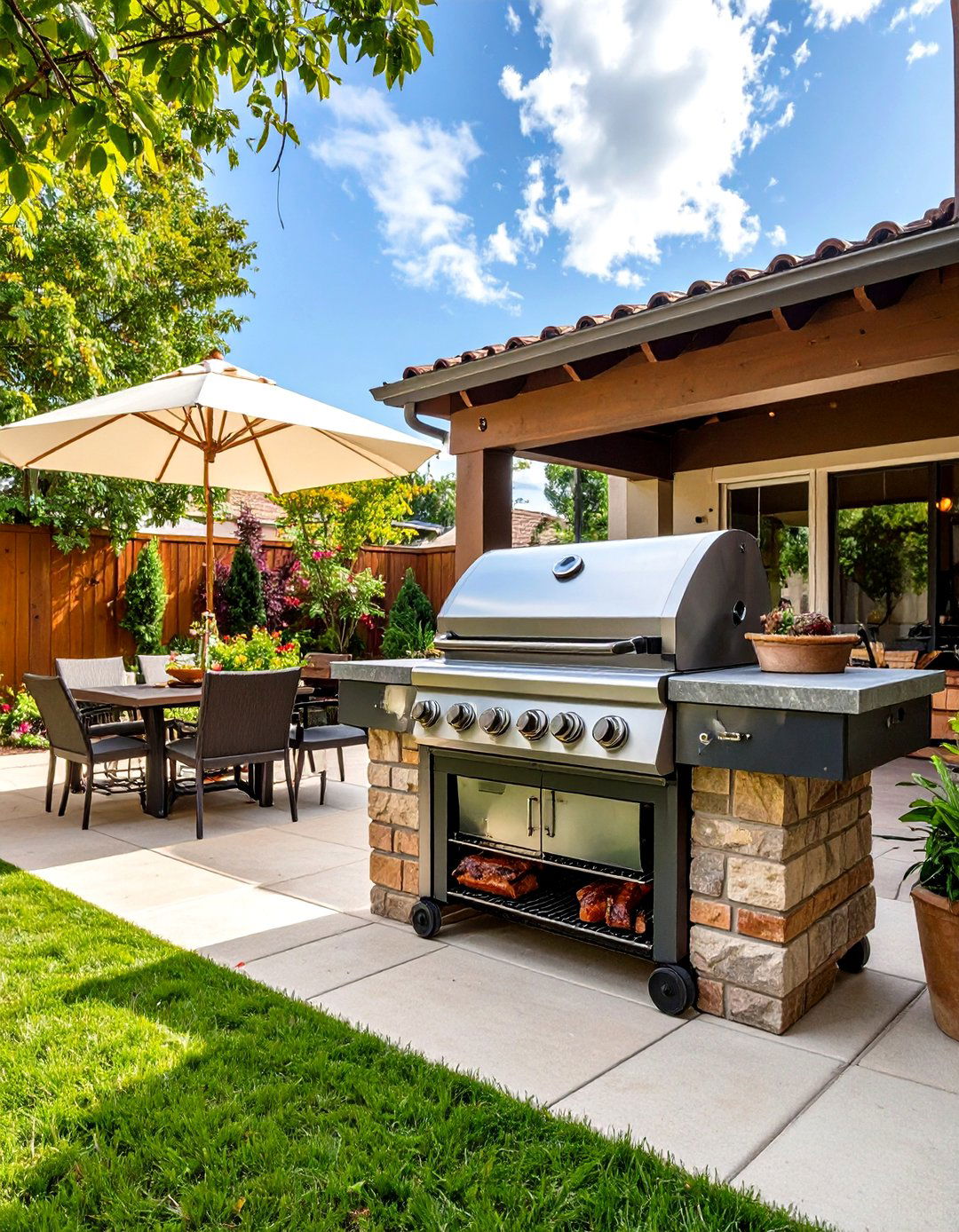
Cooking an entire hog in a dedicated whole-hog roasting BBQ pit earns serious pit-master stripes while feeding a crowd. Lay concrete blocks two courses high in a rectangle just larger than the animal, bed glowing oak embers, and rest a hinged steel grate over the top. Butterflied skin-side-down hogs cook low and slow; mid-cook, flip them so bubbling crackling finishes crisp. A plywood lid clad in foil traps smoke and reflects heat, acting like a giant Dutch oven, and you can shovel new coals through a front gap without disturbing meat. Expect 18-hour cooks but unforgettable tender ham and smoky belly slices.
9. Ceramic Kamado BBQ Pit
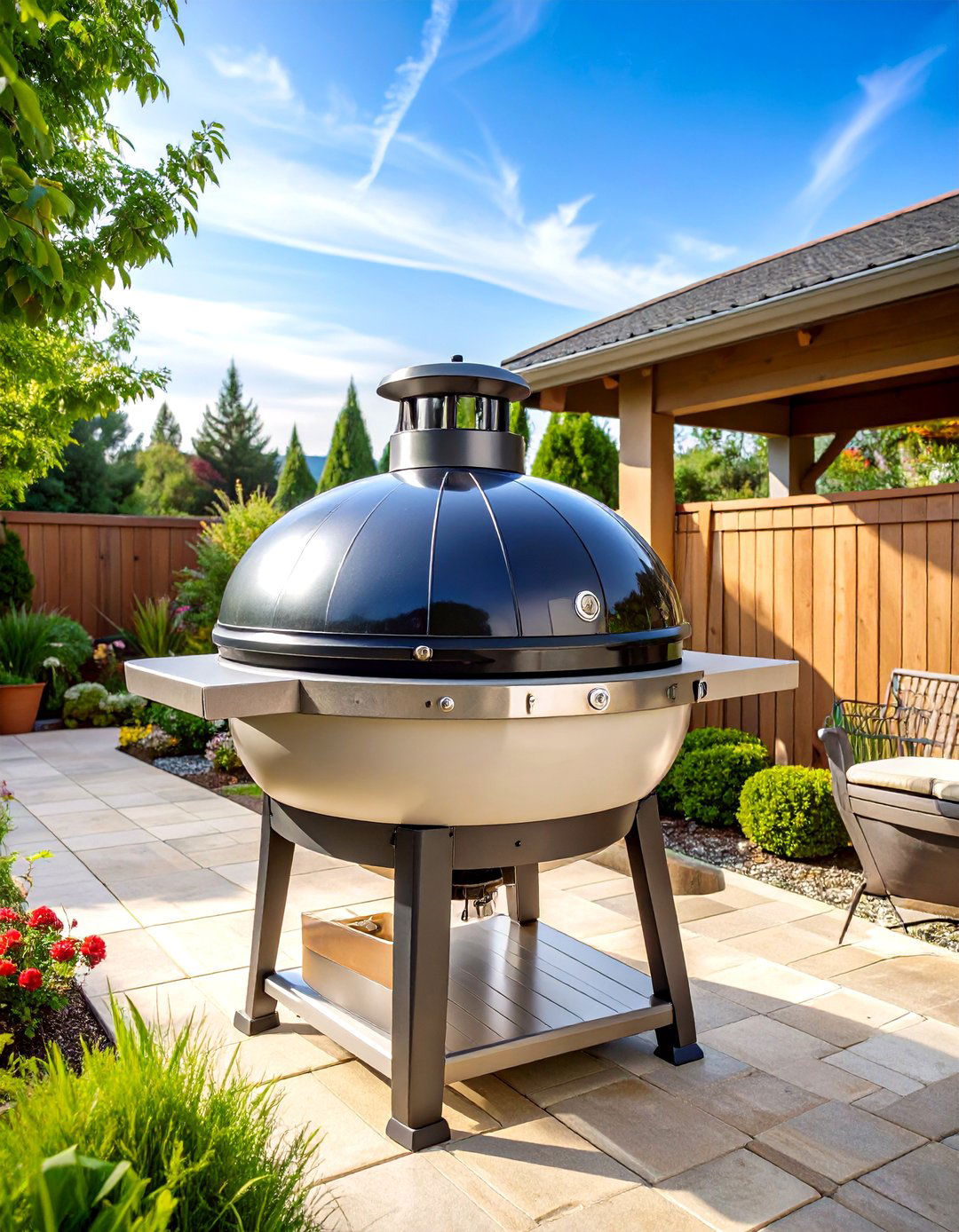
Surprisingly fuel-efficient, a ceramic kamado BBQ pit locks in moisture thanks to its thick, heat-soaking shell and gasketed dome. Lump charcoal smolders for 18 hours on a single load, letting you smoke pork shoulder overnight, then ramp vents open to hit 700 °F for Neapolitan pizza the next day. The curved firebox circulates air uniformly, eliminating hot spots, while accessories like heat-deflector stones or cast-iron planchas expand cooking styles. Because ceramic withstands decades of thermal cycling, cost amortizes over countless meals, and modern models include precision top vents and spring-assisted lids that spare your back. It’s a compact powerhouse that legitimately replaces several standalone appliances.
10. Large Rotisserie BBQ Pit
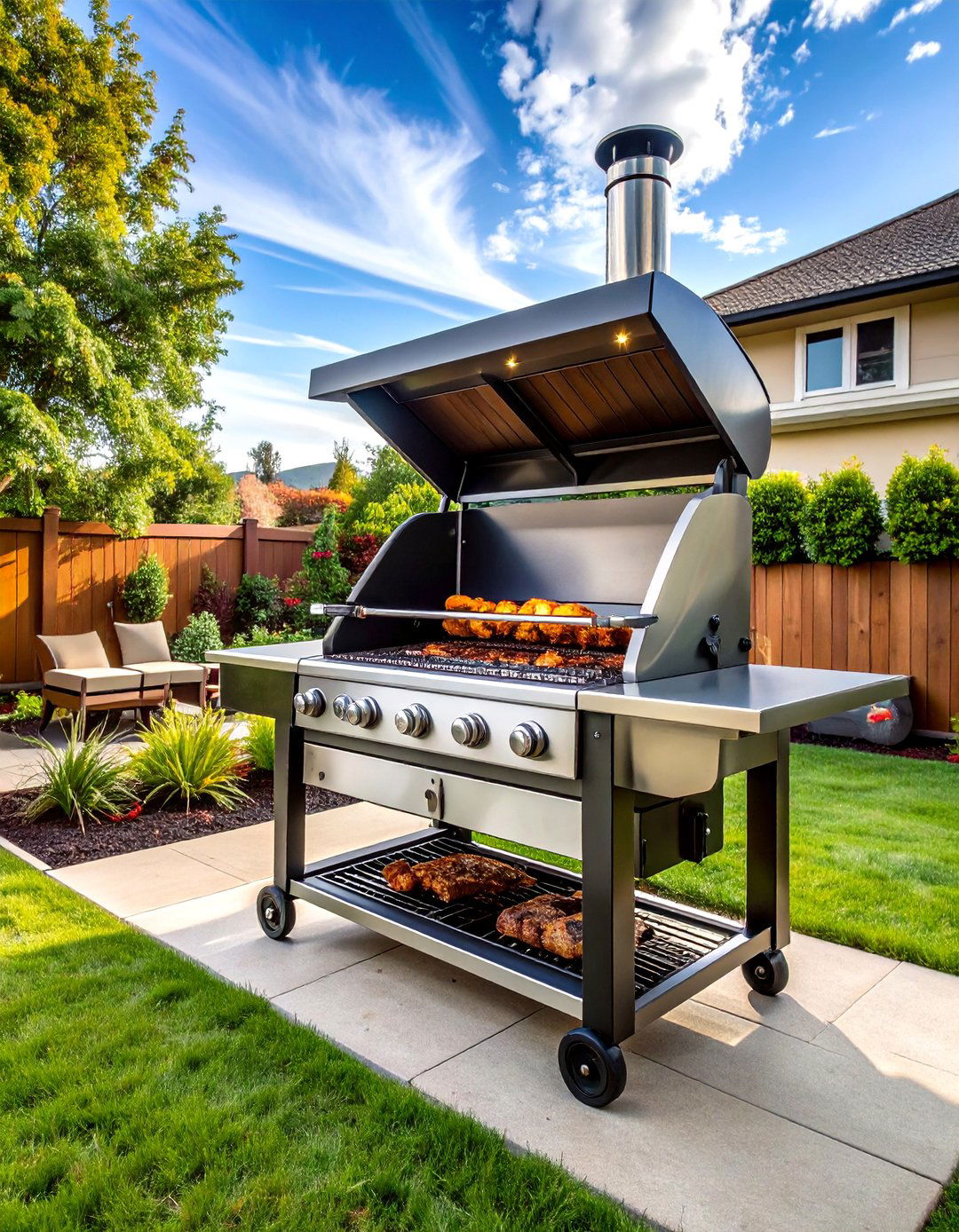
For golden, self-basting poultry or whole pigs, a large rotisserie BBQ pit spins food slowly over a trench of glowing coals. Start by welding angle-iron rails across a rectangular pit so the spit rod rests securely; a 60-rpm gearmotor mounted outside the heat zone turns turkeys evenly, preventing flare-ups and delivering uniform browning. Digging the cavity a foot below grade protects guests from heat blasts and creates an efficient chimney effect. Use heavy-gauge stainless rod and counterweights to reduce motor strain, and wrap loose joints with wire and foil to lock juices inside. When the foil peels back during the last hour, skin blisters and caramelizes spectacularly.
11. Built-In Pizza-Oven BBQ Pit
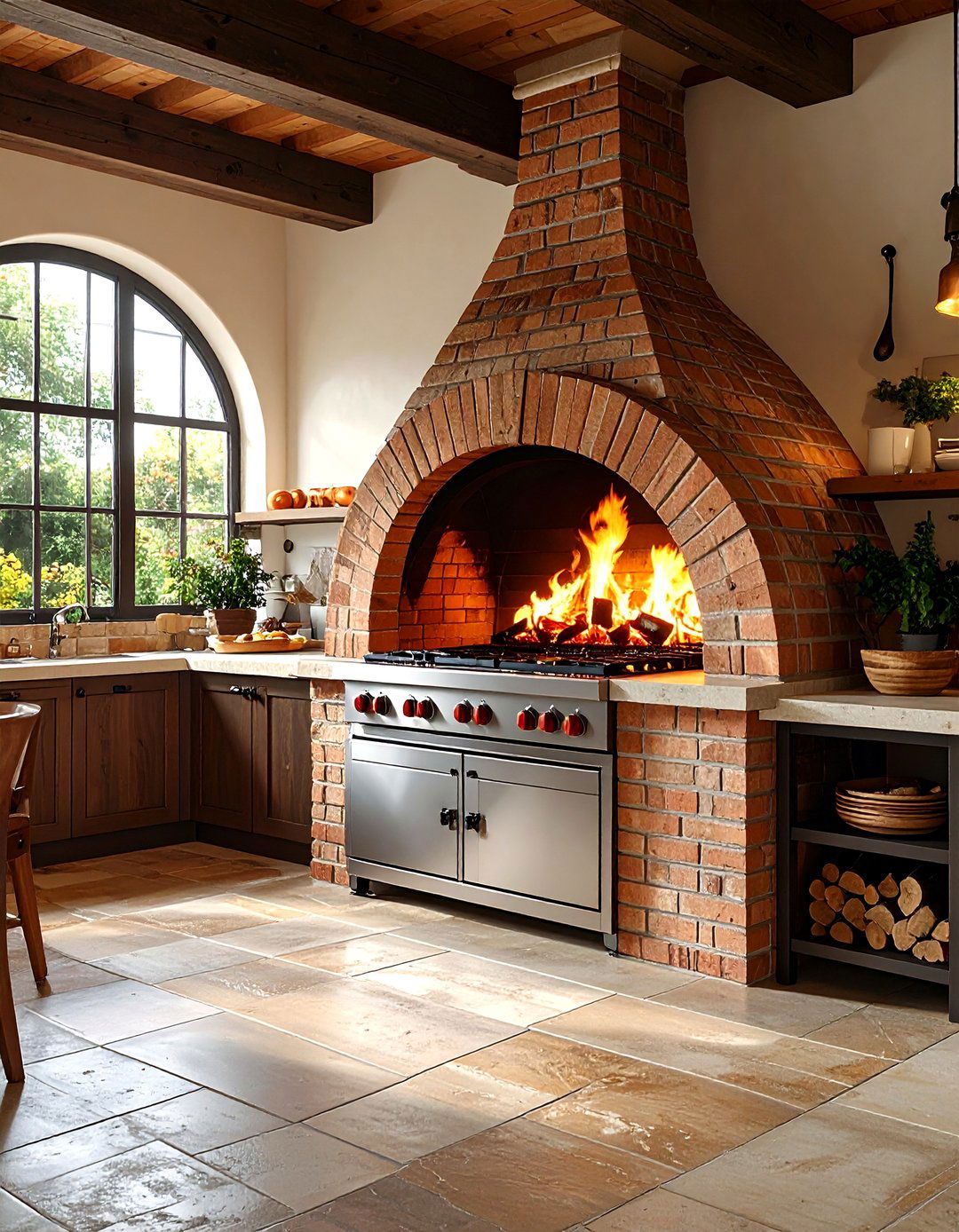
Integrating a domed, refractory-brick pizza oven into your outdoor kitchen turns a built-in pizza-oven BBQ pit into the neighborhood’s most versatile hearth. Once the dome climbs above 800 °F, retained heat bakes Margherita pies in 90 seconds, yet coasting temperatures the following hours roast ribs, bake bread, and smoke salmon on cedar planks. Create a flared entry arch for airflow, add a steel door to choke heat overnight, and pour an insulated concrete countertop around the base for prep space. Modern kits arrive pre-shaped, reducing masonry time, while gas-assist burners can ignite wood quickly on busy weeknights without sacrificing smoky flavor.
12. Portable Collapsible BBQ Pit
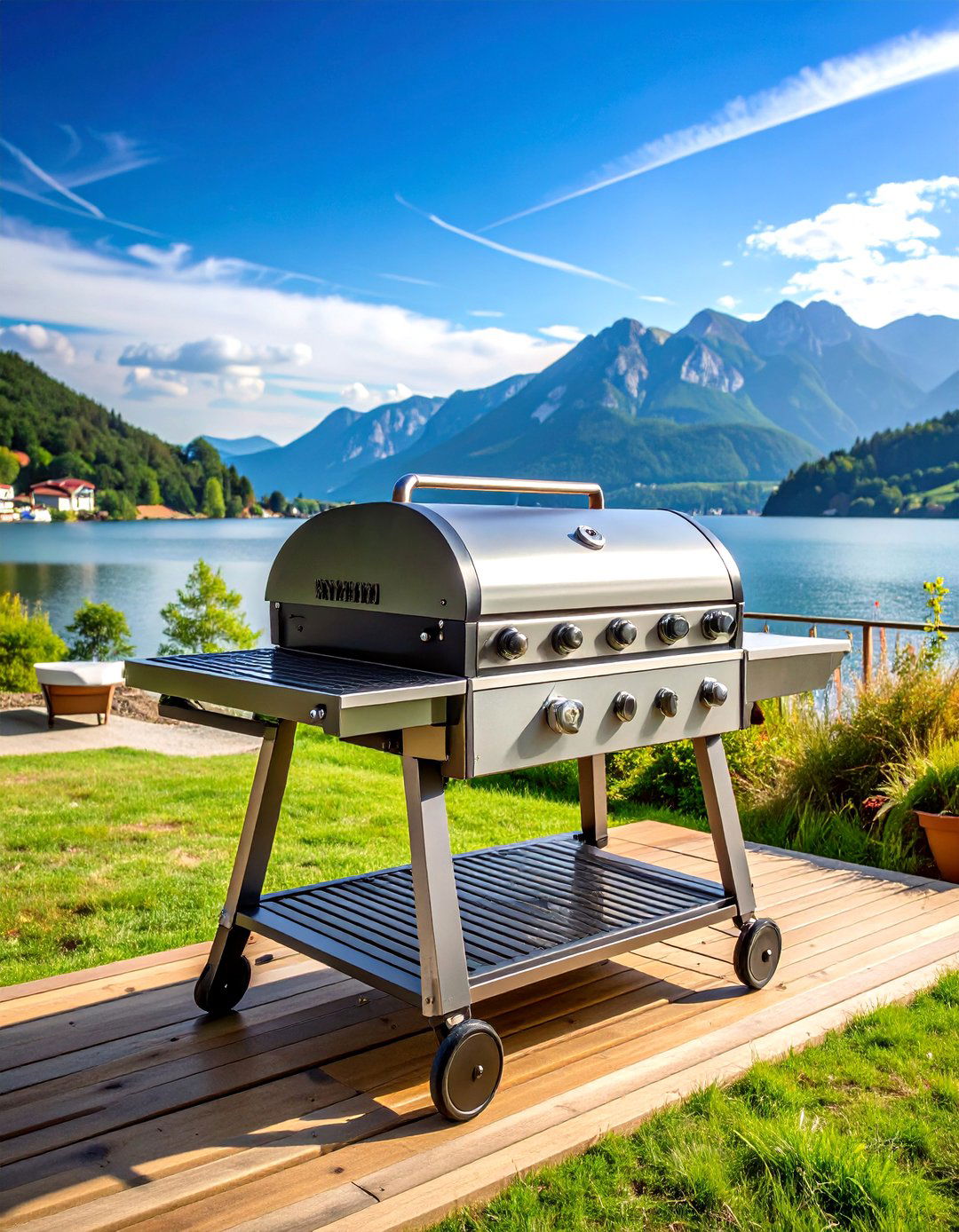
Adventure cooks love a portable collapsible BBQ pit that packs flat in a truck bed yet assembles in minutes at camp. Laser-cut steel panels slide together tongue-and-groove, creating a rigid firebox that burns either wood chunks or briquettes. Flip-up legs suspend the base above sensitive turf, satisfying leave-no-trace rules, and an adjustable grate hooks onto side slots for two heat zones. Despite weighing under 15 kg, heavy-duty construction tolerates Dutch oven weight and high searing temperatures. After the last marshmallow roast, the soot-coated pieces nest into a nylon case, keeping gear tidy. It’s the perfect balance of durability, portability, and real-flame flavor.
13. Tractor-Rim Upcycled BBQ Pit
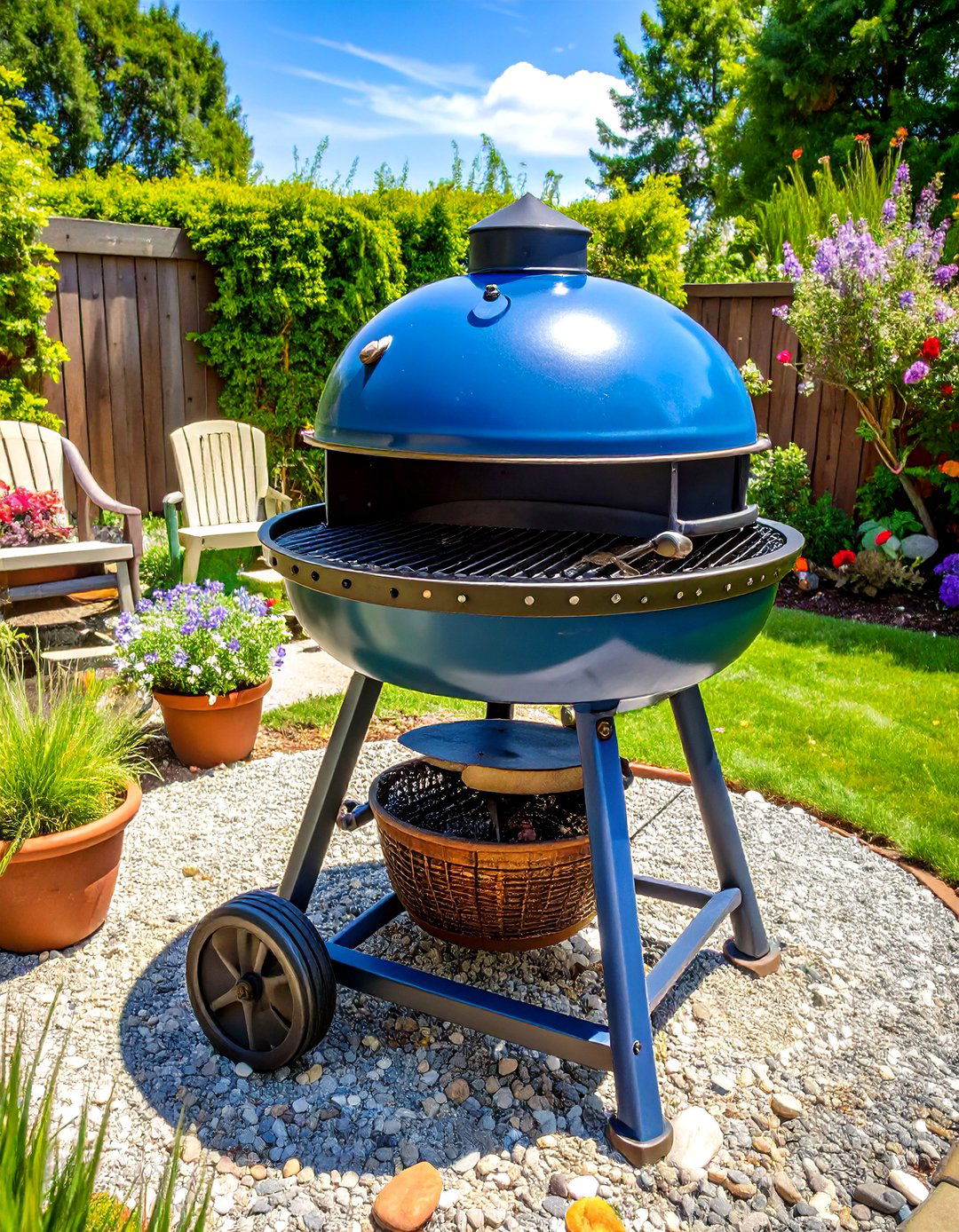
Give an old tractor or semi wheel a second life by turning the hefty steel rim into a tractor-rim upcycled BBQ pit that oozes rustic personality. After cleaning and wire-brushing the rim, weld three short rebar legs for stability, then tack a grill-grate flange around the interior lip so cooking surfaces sit flush. The rim’s curved profile focuses heat, making it easy to bank coals on one side for two-zone cooking, and the thick metal shrugs off warping even during roaring bonfires. Drill drainage holes to prevent rain pooling, paint the exterior with high-temp enamel, and roll it wherever the party travels.
14. Fire-Pit Grill Combo BBQ Pit
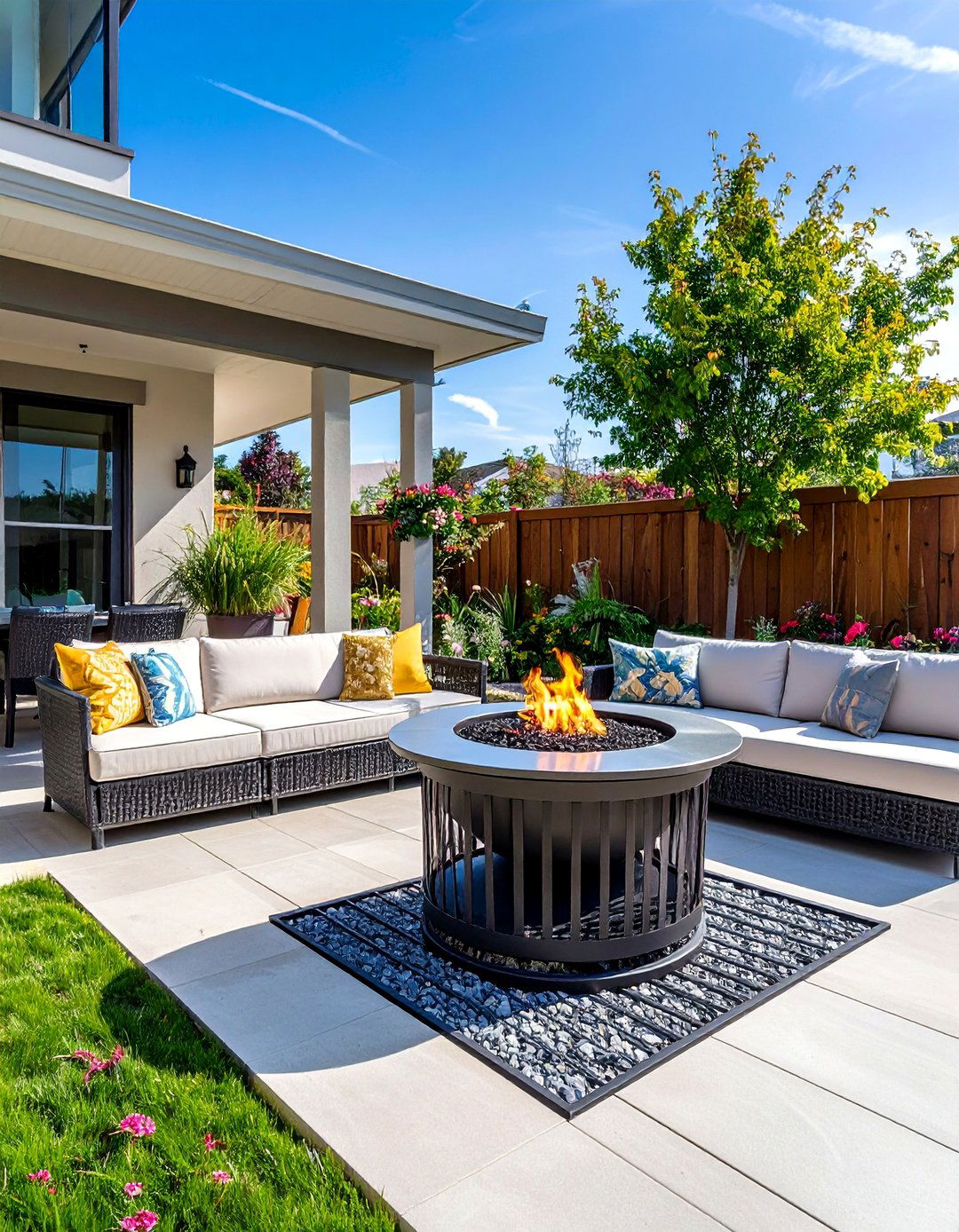
A fire-pit grill combo BBQ pit delivers flickering ambience and cooking prowess in one centerpiece. Start with a laser-cut steel ring kit sized around 48 inches, bolt on crossbars that support a swing-arm grate, and drop the ring into a compact gravel pad for drainage. When entertaining, slide the grate over the flame for sizzling kabobs; when guests just want warmth, pivot it aside and pile on logs for shoulder-season fires. Many kits include spark screens and adjustable poker-style rotisseries, while collapsible designs break down for off-season storage. It’s an elegant way to maximize lounging space without sacrificing serious grilling potential.
15. Hybrid Gas-Charcoal BBQ Pit

Combining rapid ignition with smoky character, a hybrid gas-charcoal BBQ pit lets you switch fuels mid-cook. Models feature a propane burner under a perforated charcoal tray; fire the gas for five minutes, shut it off once coals glow, and enjoy charcoal flavor without chimney starters. Dual-door designs isolate briquettes from gassy flare-ups, and dedicated ash pans simplify cleanup. For weeknight burgers, skip charcoal entirely and grill on stainless burners, saving money and time. Premium units even accept wood splits for low-and-slow smoking, giving three heat sources in one chassis and freeing patio space. Hybrids are ideal for cooks who crave flexibility without multiple appliances.
16. Stainless-Steel Santa Maria Cart BBQ Pit
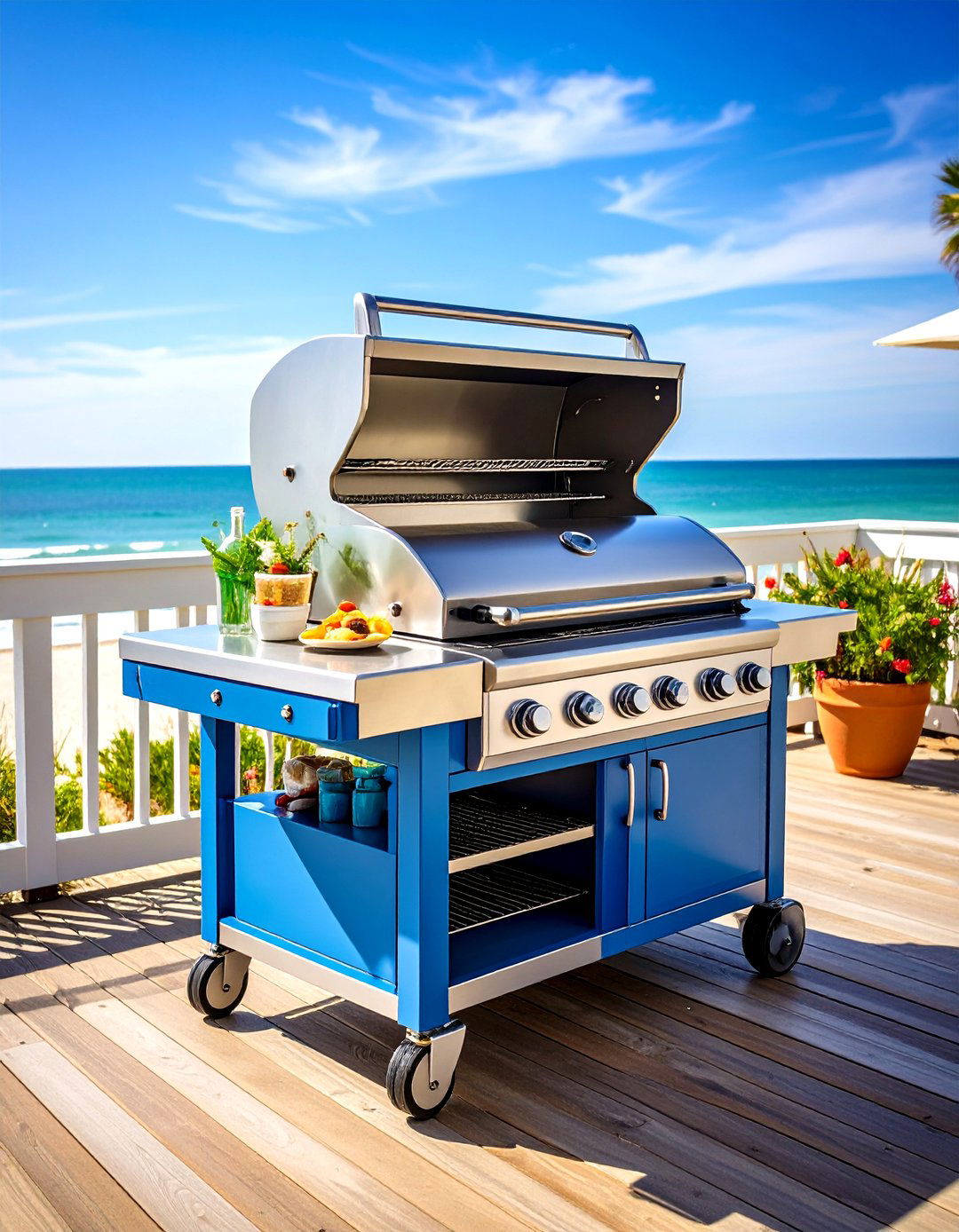
Rolling versatility meets open-fire drama in a stainless-steel Santa Maria cart BBQ pit. Crafted from 304 or 430 stainless, the cart shrugs off rust and coastal humidity, making it perfect for beach-side asados. A hand-crank wheel raises the V-grate smoothly while four lockable casters let one person reposition hot coals with ease. Because stainless reflects rather than absorbs heat, coals last longer, and clean-up requires only a quick scrape and hose-down. Add removable side shelves for cutting boards and a rear brasero box that generates fresh embers without lifting the grate. This mobile setup merges restaurant performance with the convenience of a backyard trolley.
17. Foldable Tabletop BBQ Pit

Short on patio space? A foldable tabletop BBQ pit unfolds like a suitcase, props onto integrated legs, and creates a sizzling hibachi anywhere. Stainless or powder-coated steel panels hinge outward, exposing a shallow coal tray and a set of twin grates wide enough for four burgers. Vent holes punched in the sides keep airflow steady, while a latch-on windscreen shields delicate fillets from gusts. After cooking, dump ashes, wipe down, and collapse the unit; cool handles mean you can pack it away moments later. Budget supermarket specials even include pizza-stone accessories, proving big flavor doesn’t always demand permanent installations.
18. Modular Steel-Panel BBQ Pit

A modular steel-panel BBQ pit lets DIYers size pits to fit any patio simply by adding or removing sides. Plasma-cut trapezoid plates bolt together with corner gussets, forming a rigid hexagon that resists warping when loaded with logs. Because every panel is identical, replacing a fire-scarred piece takes minutes, extending lifespan indefinitely. Add threaded tabs near the rim for accessories like rotisserie brackets, Dutch-oven hangers, or a half-moon plancha. When moving house, disassemble the pit into flat plates that stack under a seat, making it landlord friendly. The geometric design also looks contemporary, blending seamlessly with modern outdoor furniture.
19. Triple-Zone BBQ-Smoker-Griddle Pit
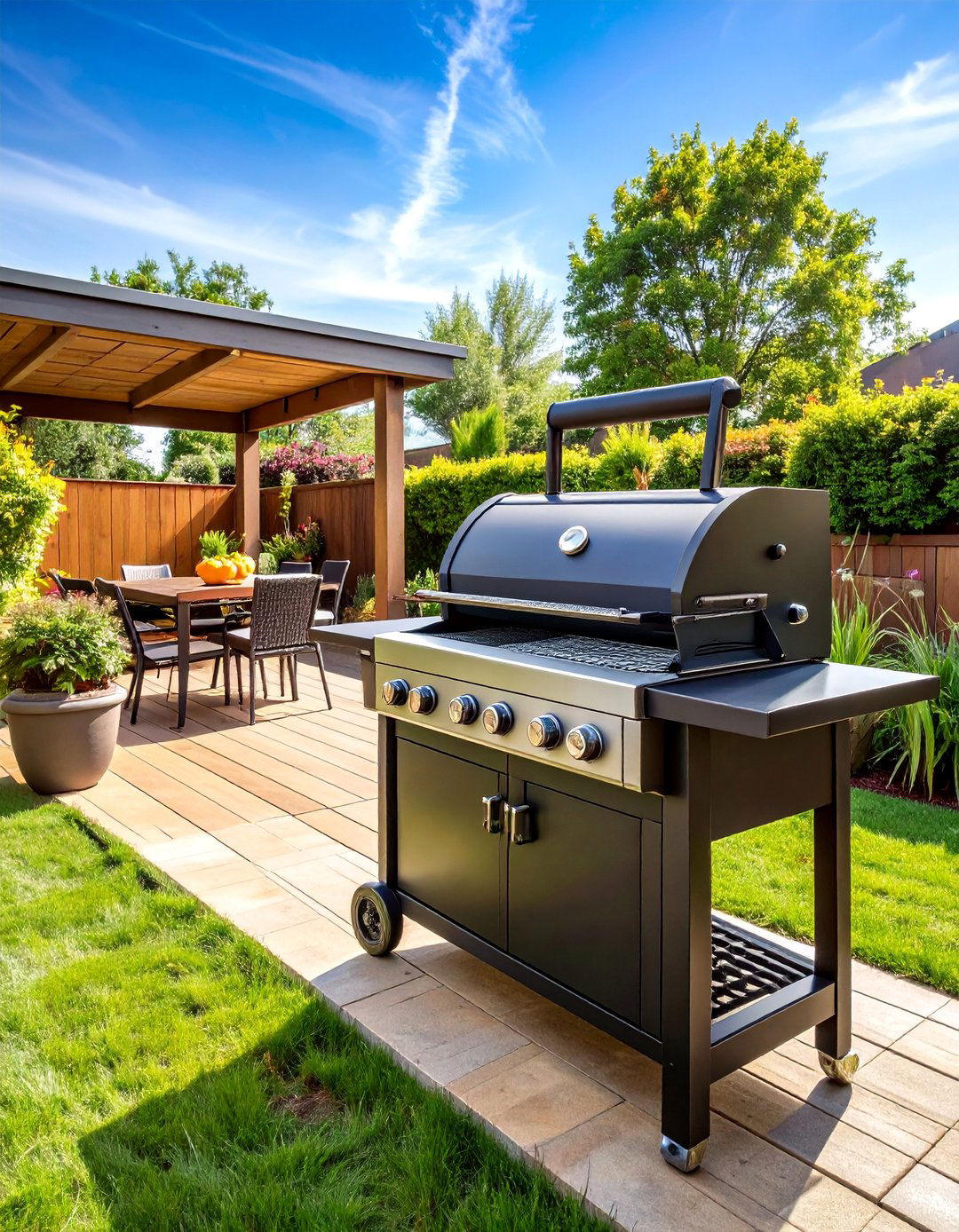
Serious entertainers swear by a triple-zone BBQ-smoker-griddle pit that merges three cooking surfaces across one frame. Offset firebox smoke curls into a center chamber for ribs, a cast-iron plancha on the left sears fajitas, and a wire grate on the right grills wings over direct coals. Independent chimney dampers and slide-out ash pans allow each section to run distinct temperatures simultaneously, letting you synchronize courses without juggling gadgets. Weld hooks under the shelf to hang tongs, and plumb a digital thermometer probe through the lid for hands-free monitoring. Though complex, this multitasker keeps gatherings flowing and eliminates cold-food waits.
20. Concrete-Block-and-Grate DIY BBQ Pit
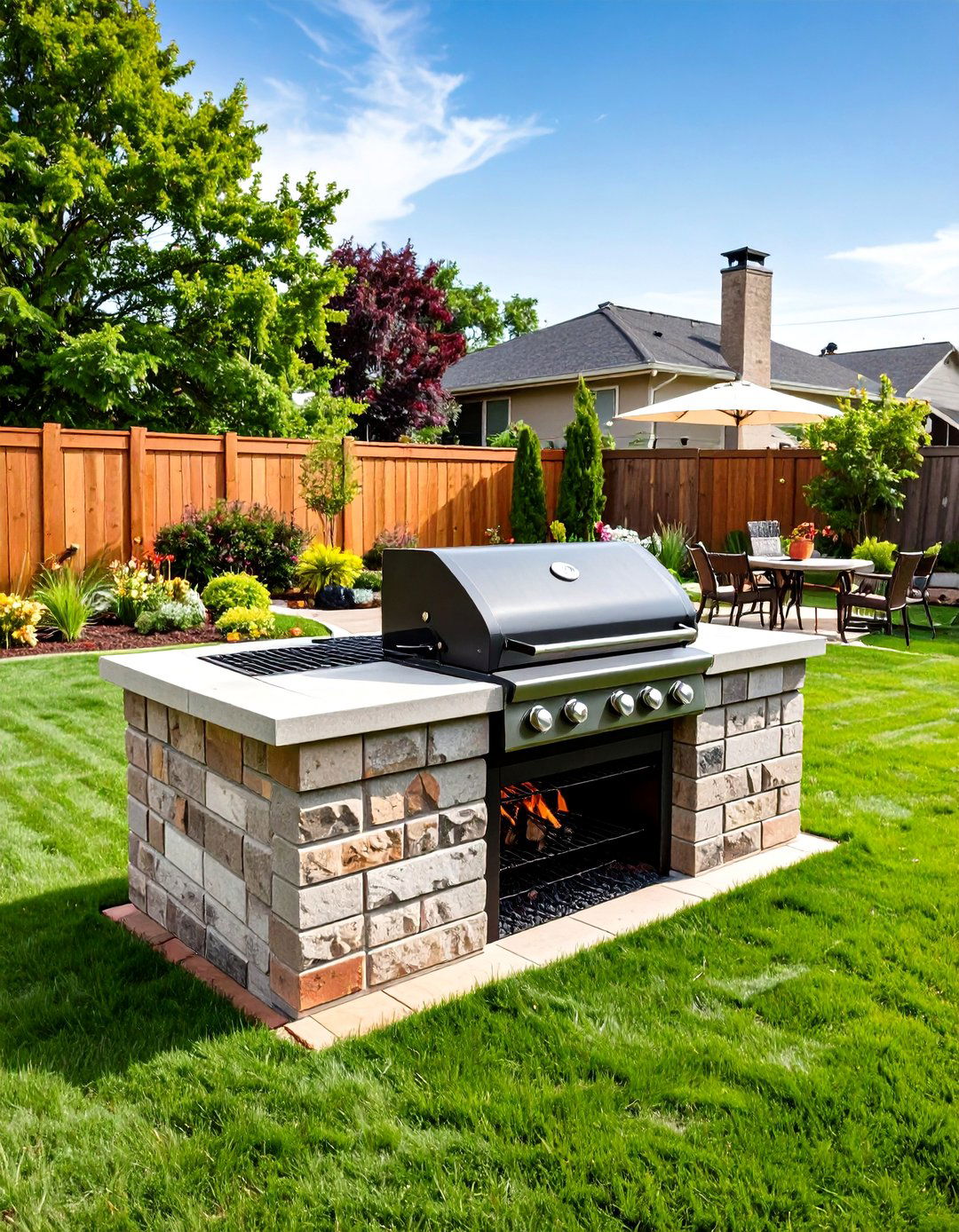
Finally, for pure simplicity, stack twelve split-face concrete blocks in a two-tier ring, drop in a heavy expanded-metal grate, and you have a concrete-block-and-grate DIY BBQ pit ready before the charcoal chimney finishes lighting. Because the grate sits just inches above coals, steaks sear hard, yet raising the food on fire-brick spacers instantly converts the pit into a gentle smoker. The open-top design gives unhindered access for paella pans or Dutch ovens, and rebuilding the ring in a new shape only takes ten minutes. At season’s end, unstack the blocks, hose them off, and store out of sight until next spring.
Conclusion:
Surveying these BBQ pit possibilities proves that smoky perfection has infinitely adaptable blueprints. Choose brick or concrete when permanence and heat retention matter, pick stainless carts or hybrid gas-charcoal frames for everyday convenience, or fold up a collapsible firebox for distant shorelines—each path leads to sizzling meals and shared stories. Remember to match pit style with your cooking goals, local fuel availability, and willingness to maintain materials. With thoughtful planning, even budget designs deliver the same essential alchemy: clean combustion, steady temperatures, and a convivial glow that keeps guests lingering long after the last bite. Fire up, experiment, and let the pit make memories.



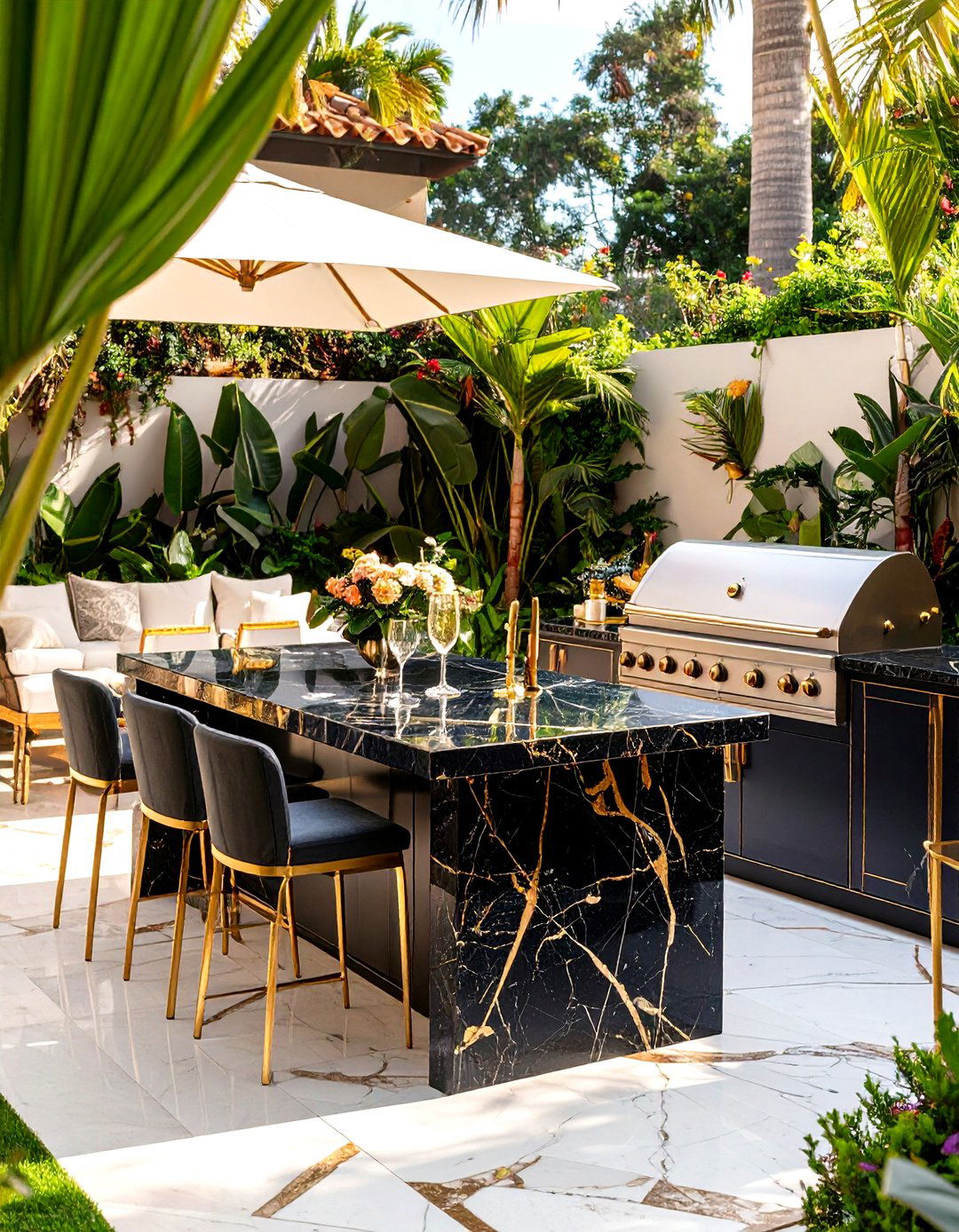

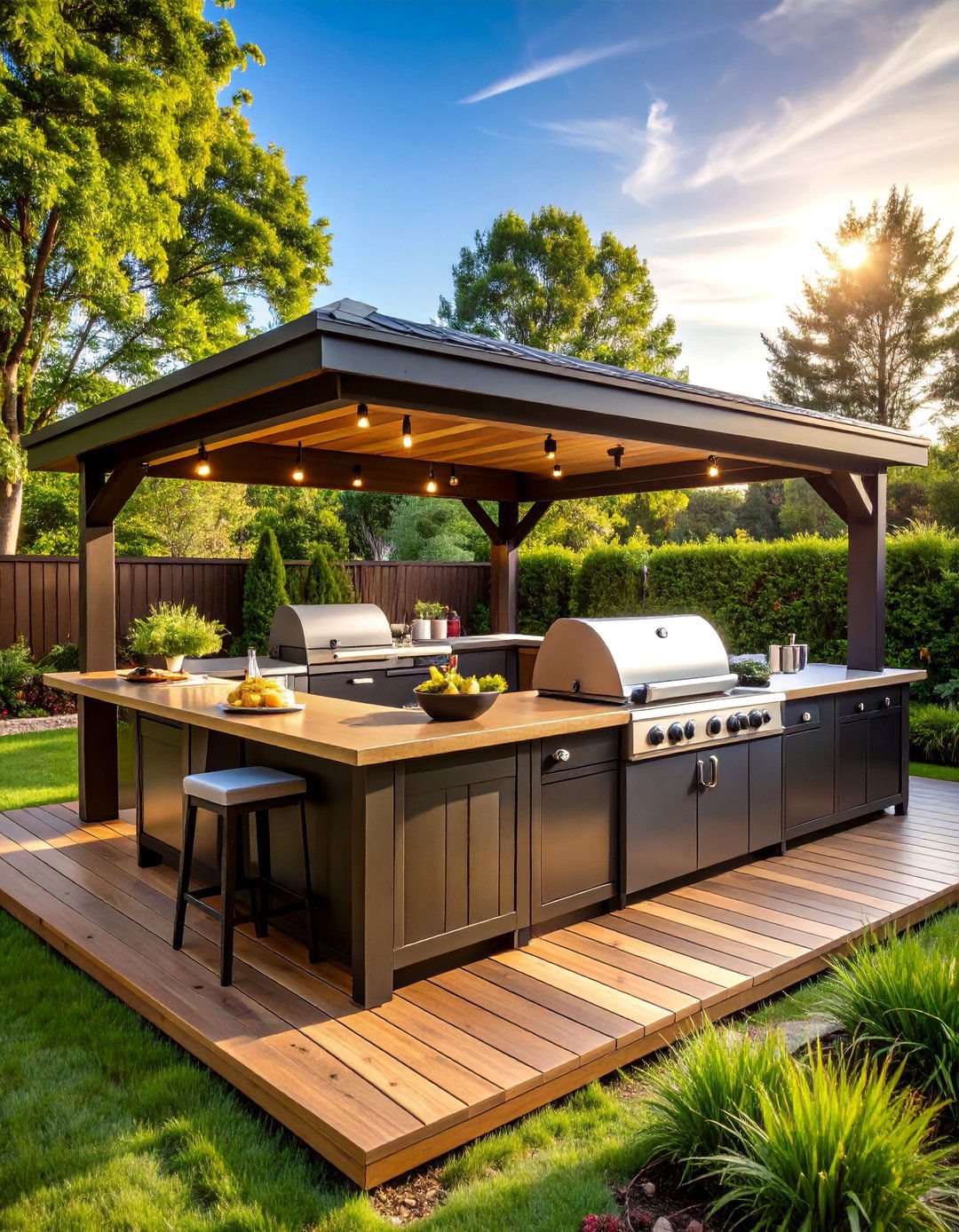
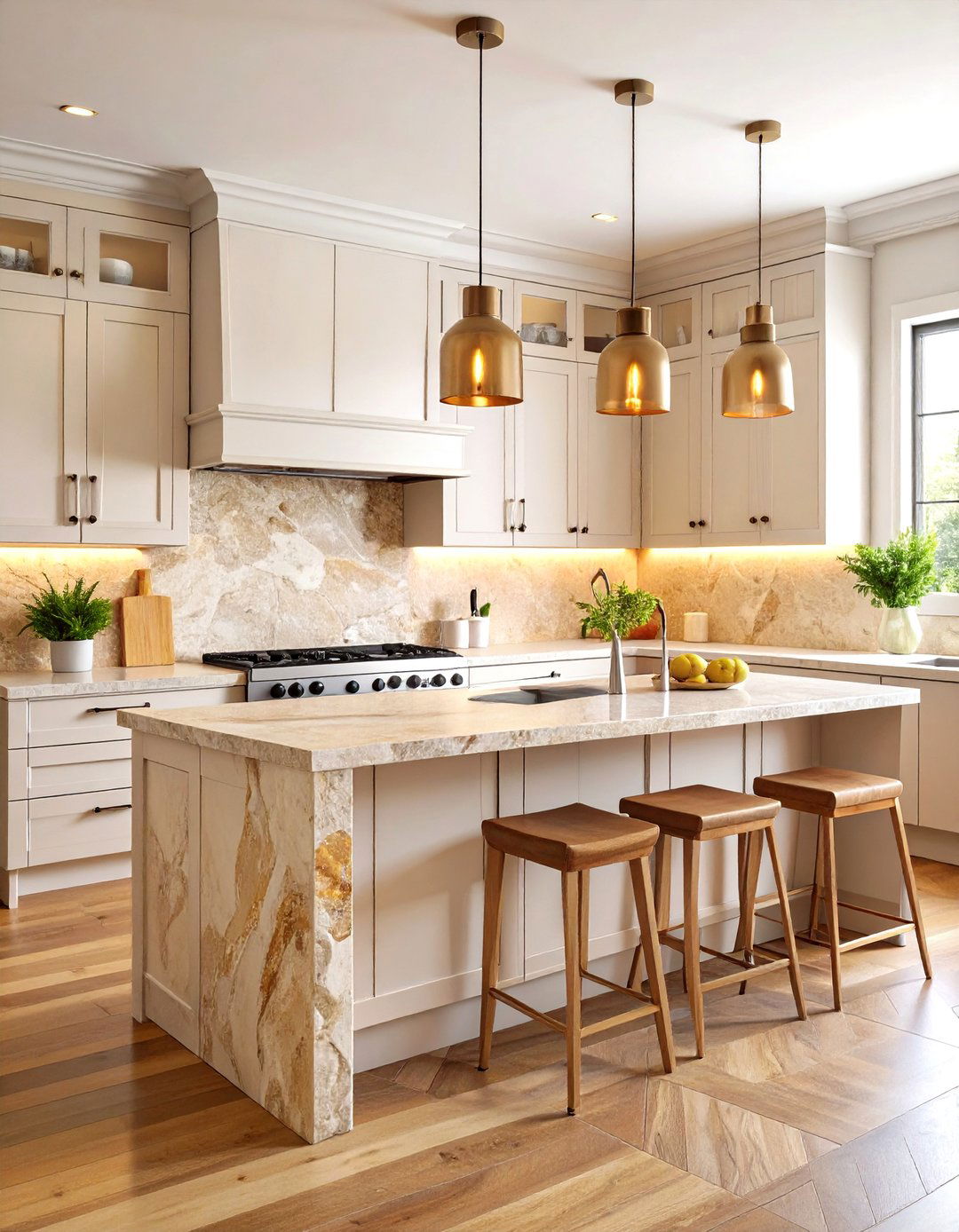
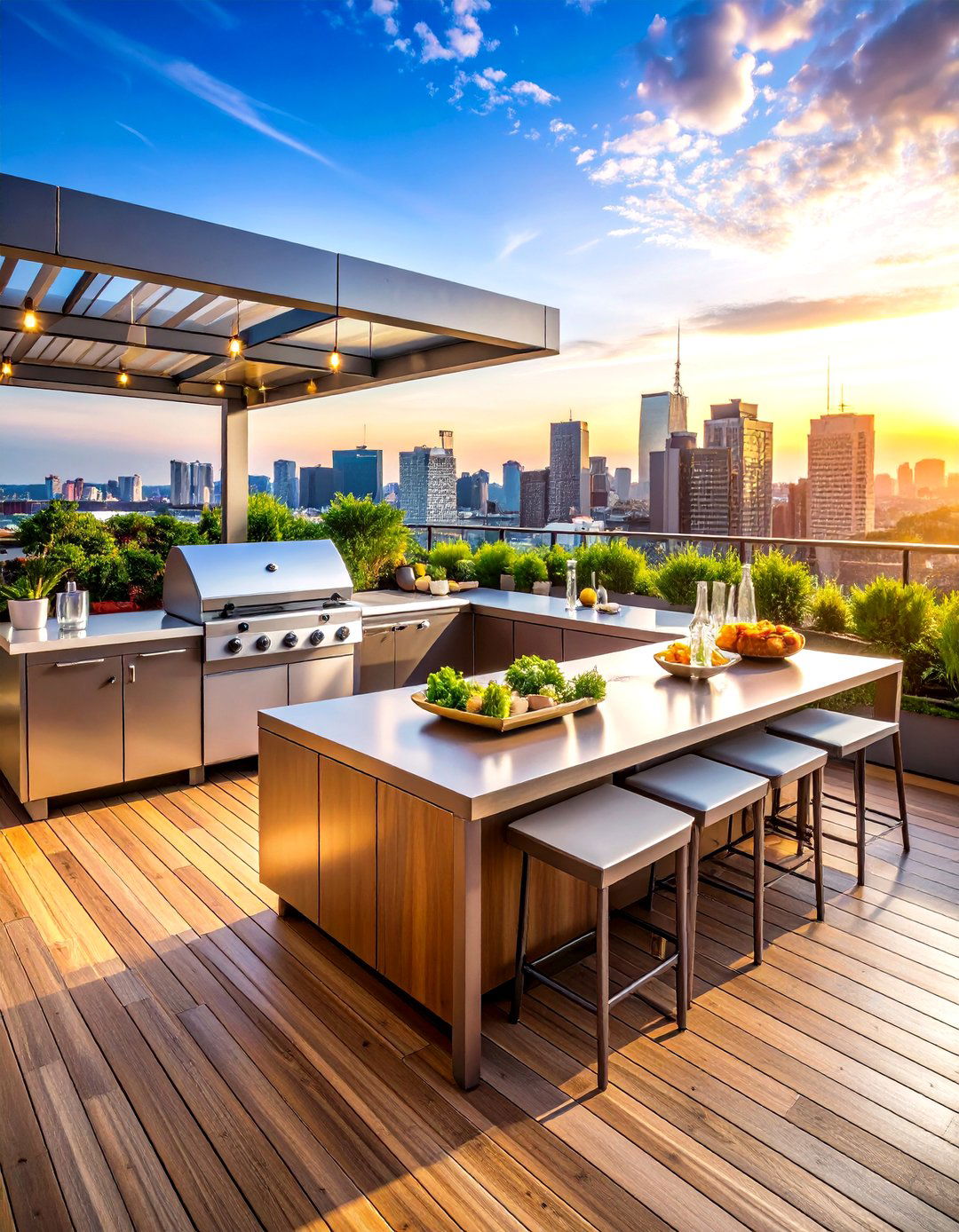
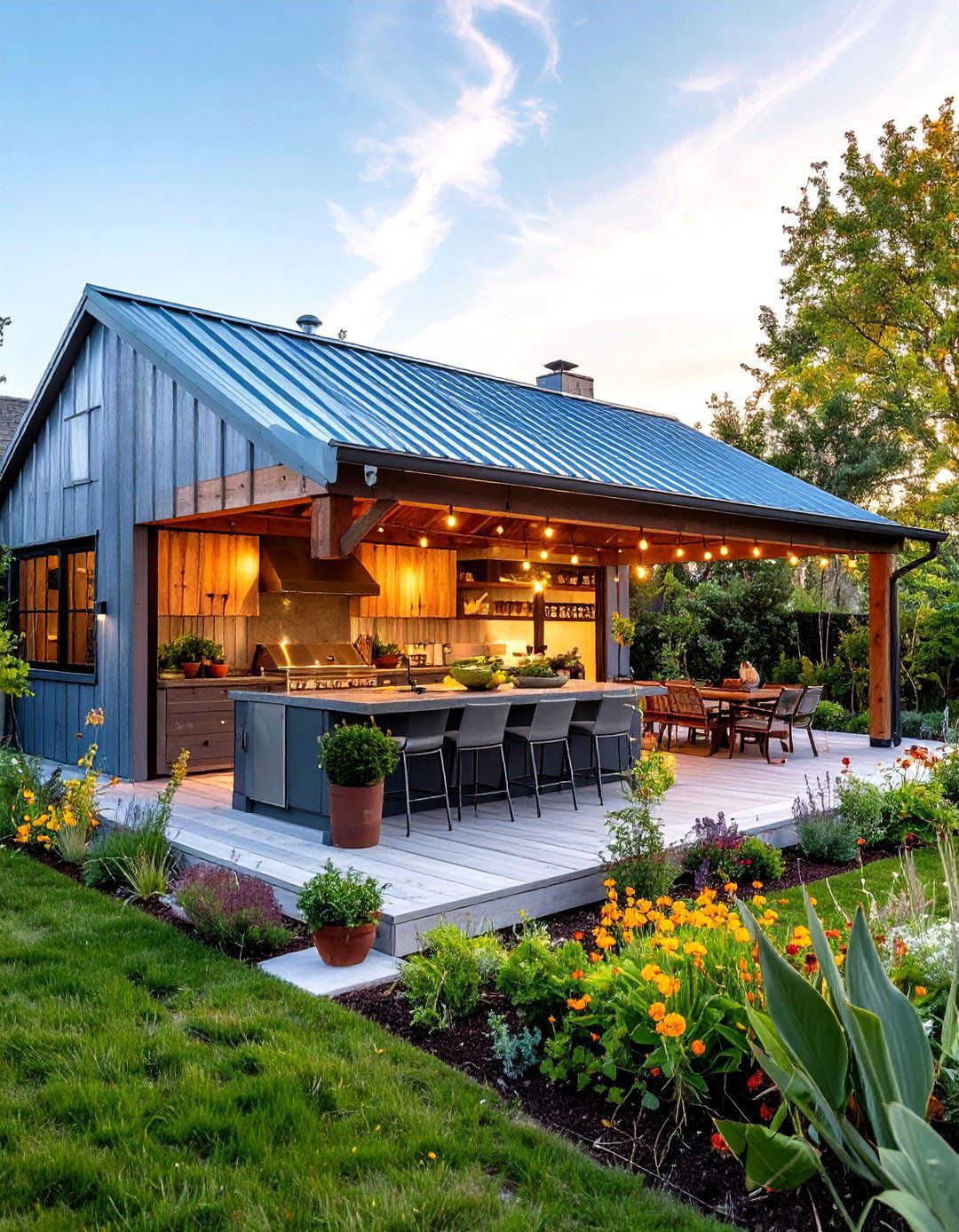
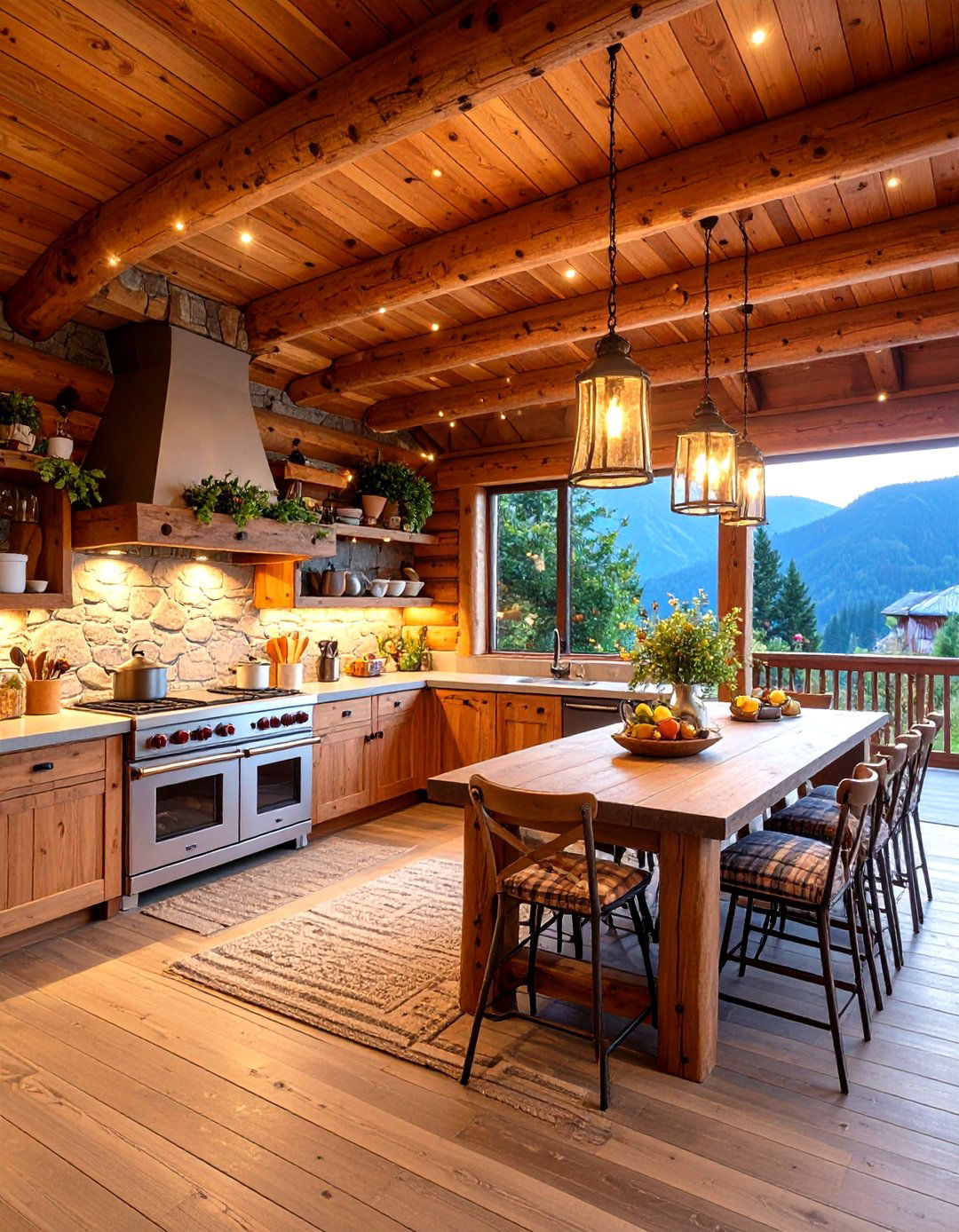
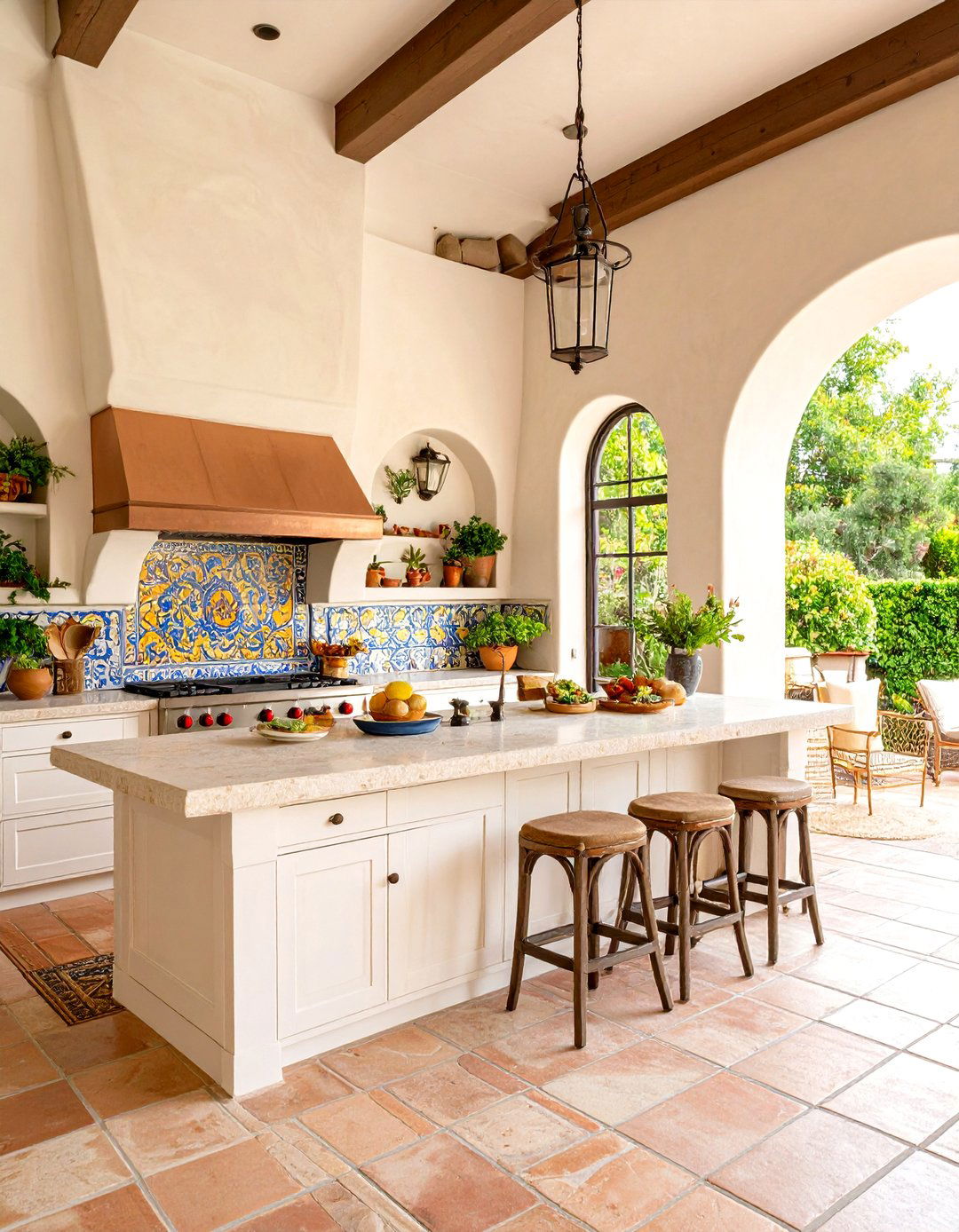
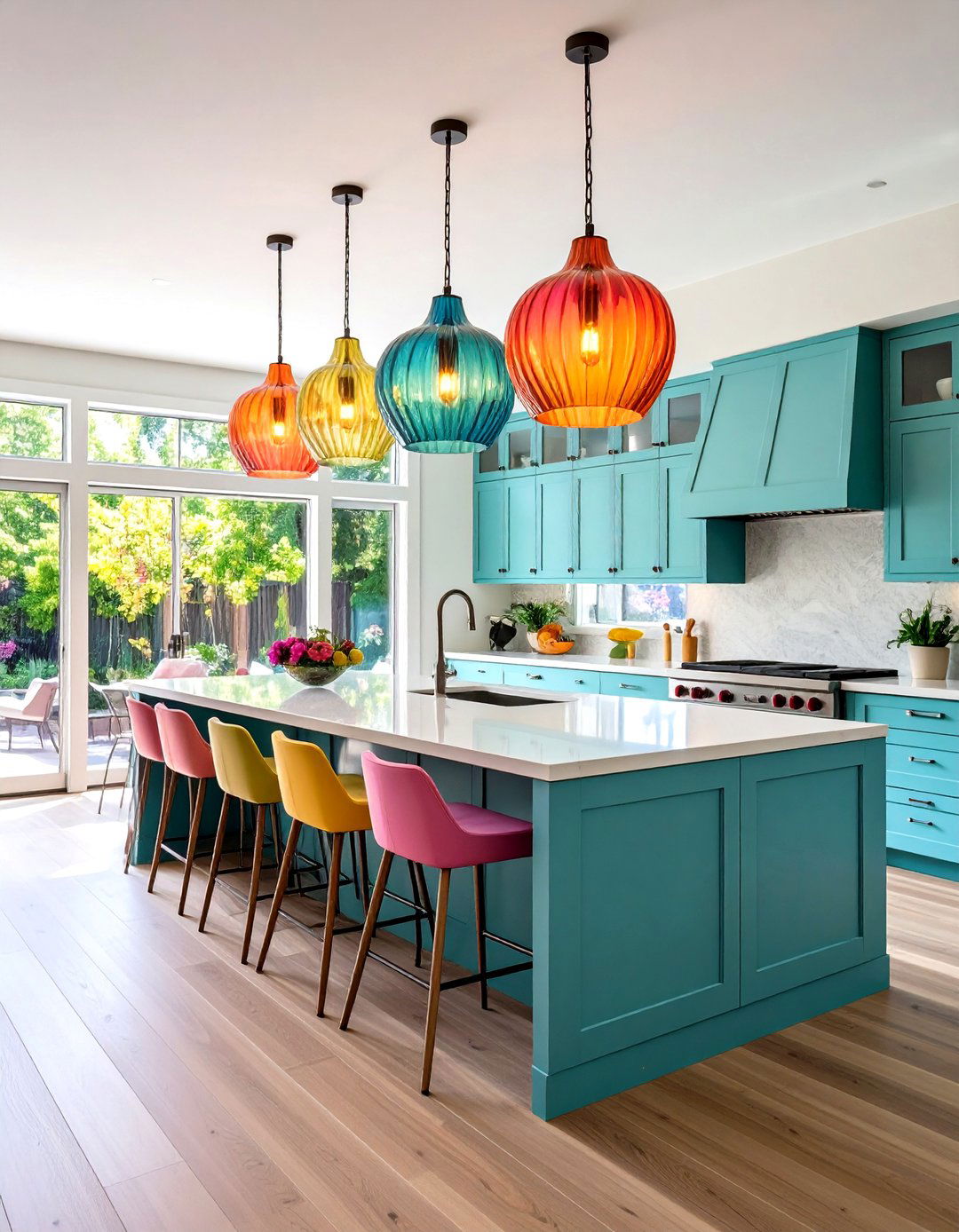

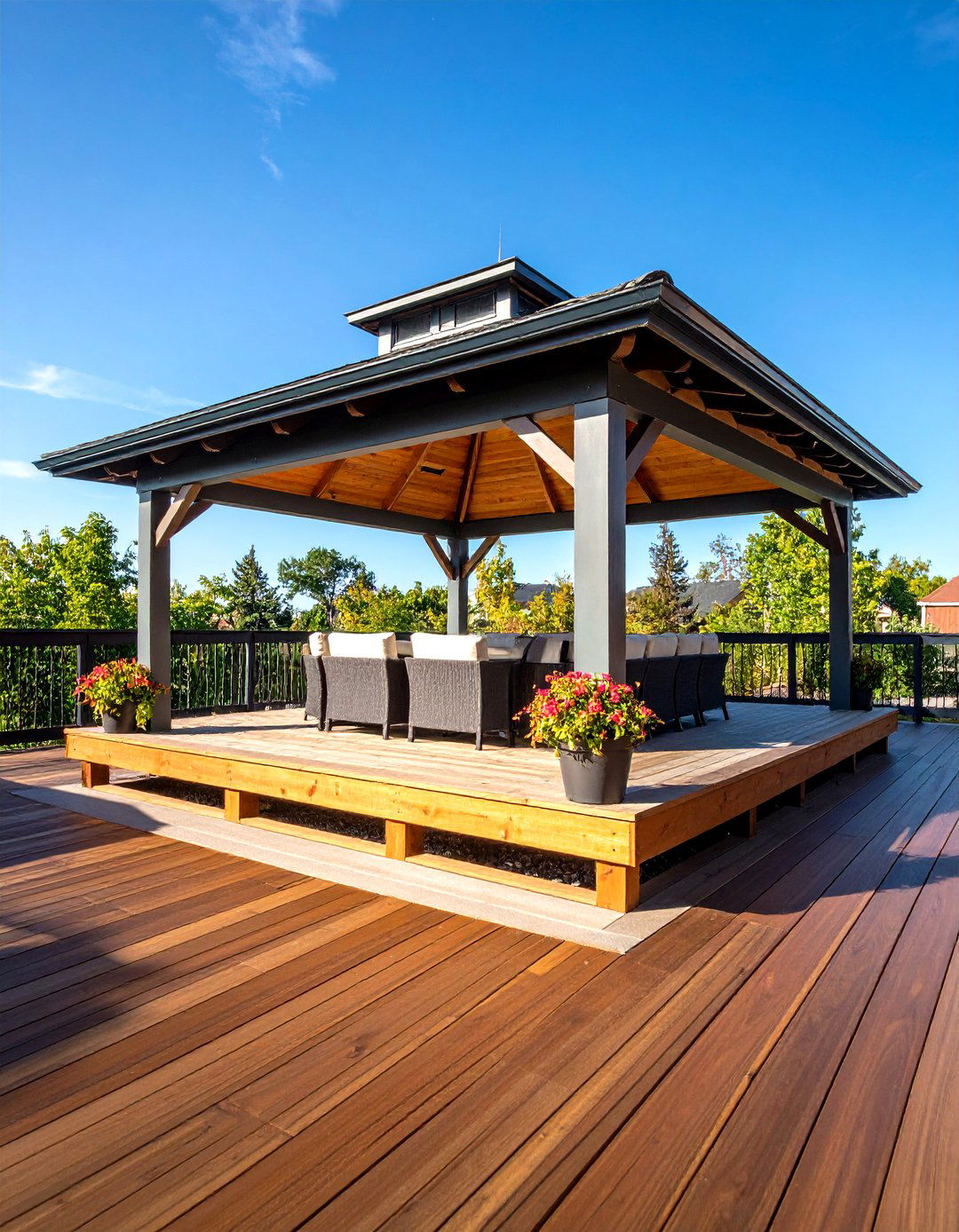
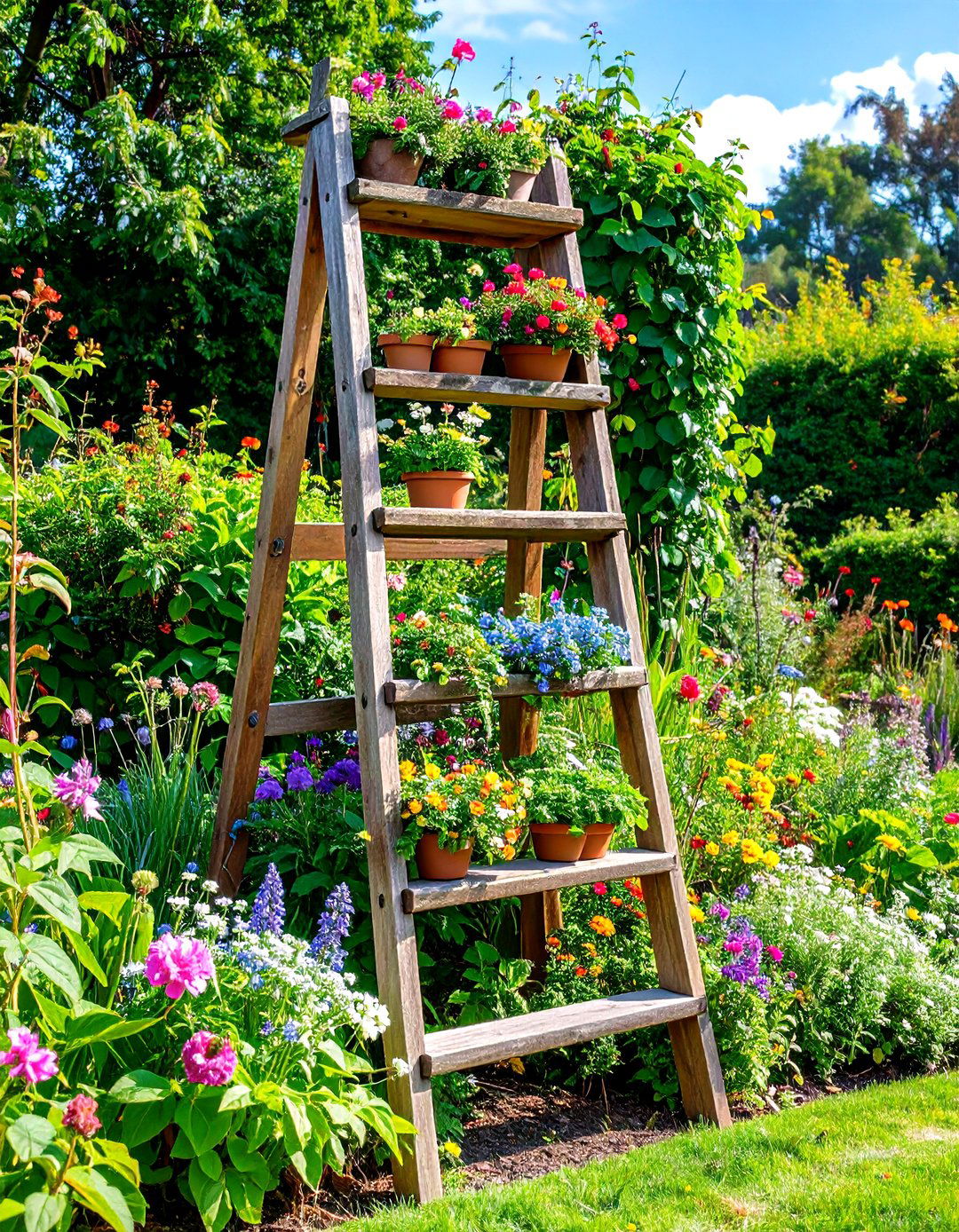
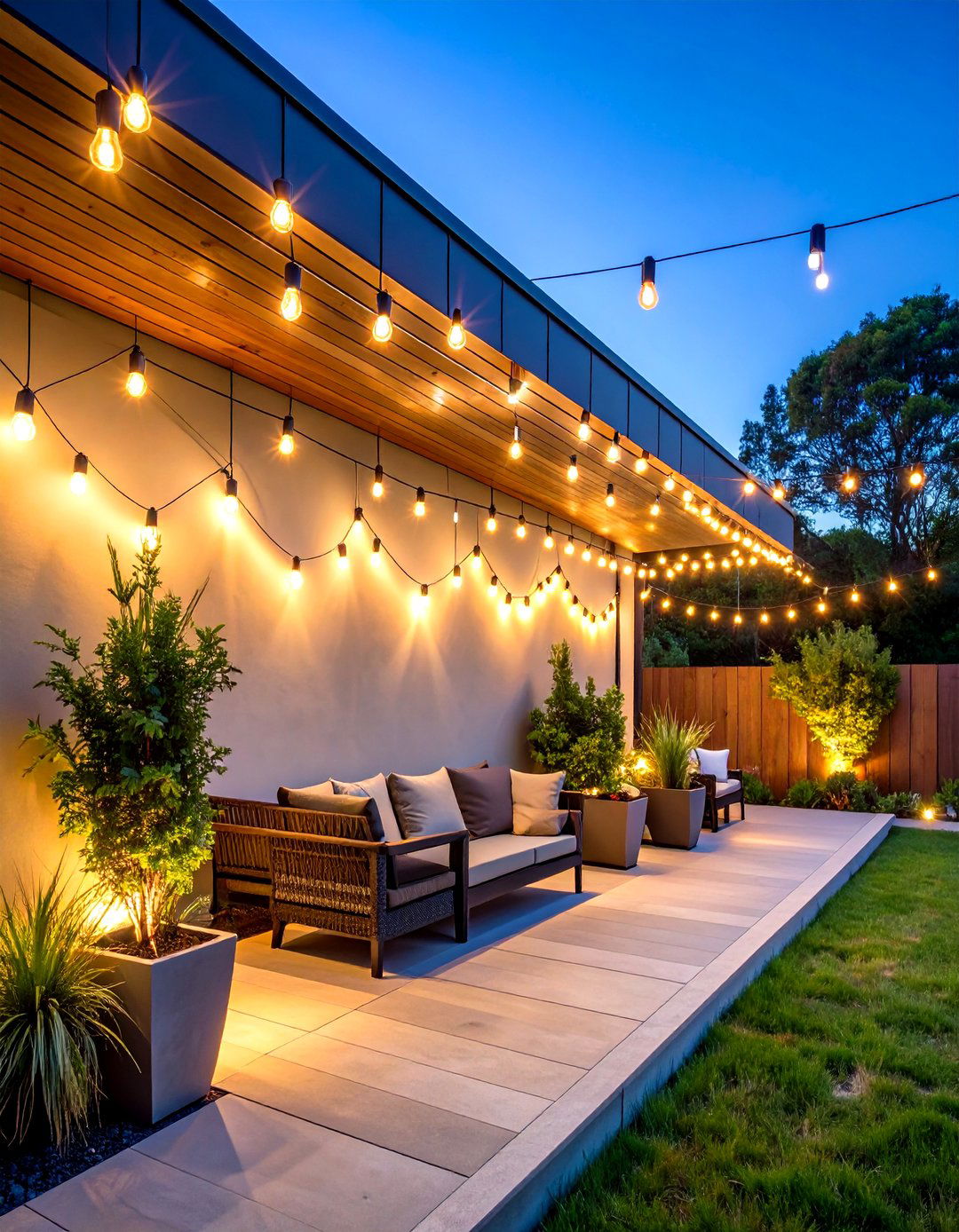
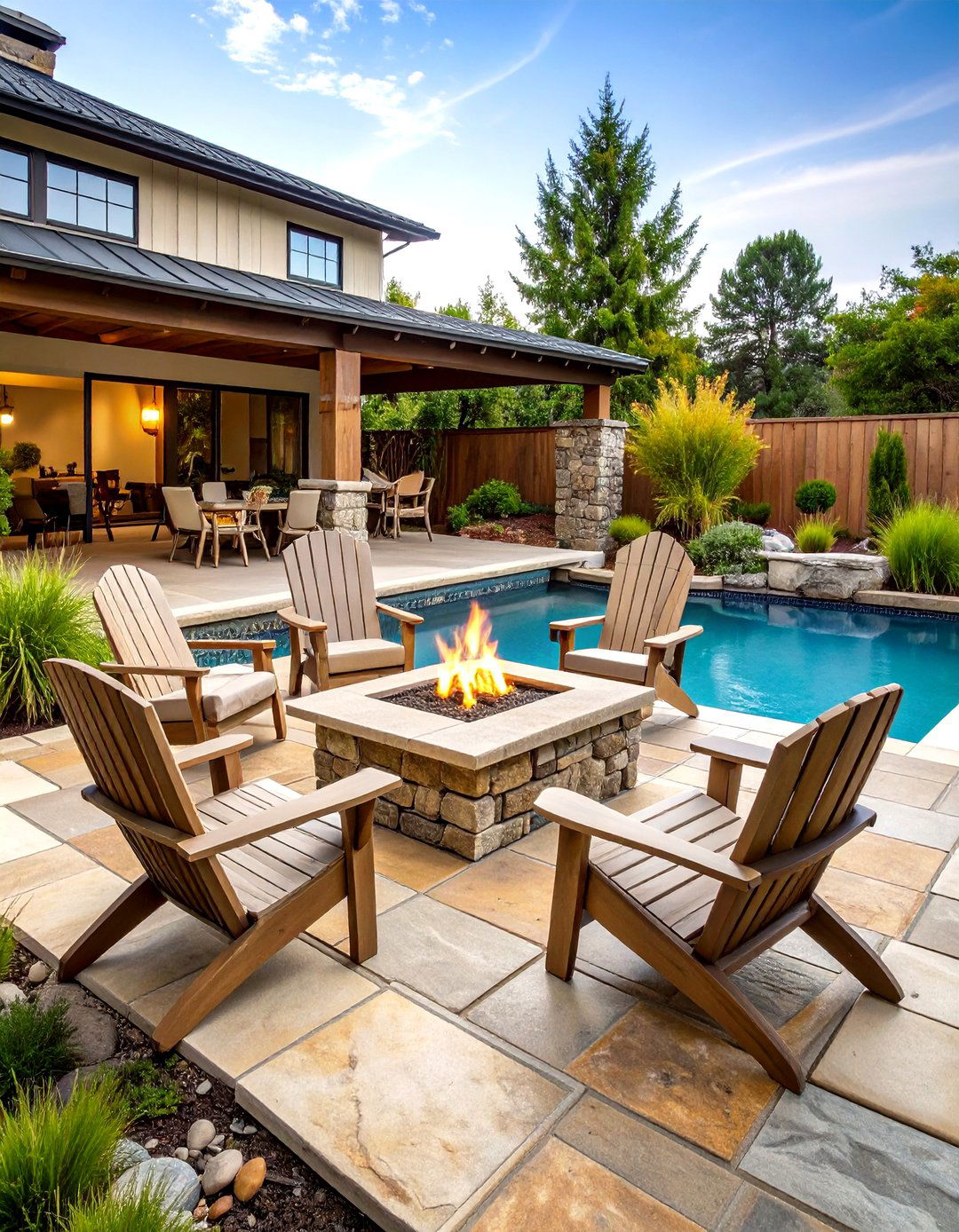
Leave a Reply